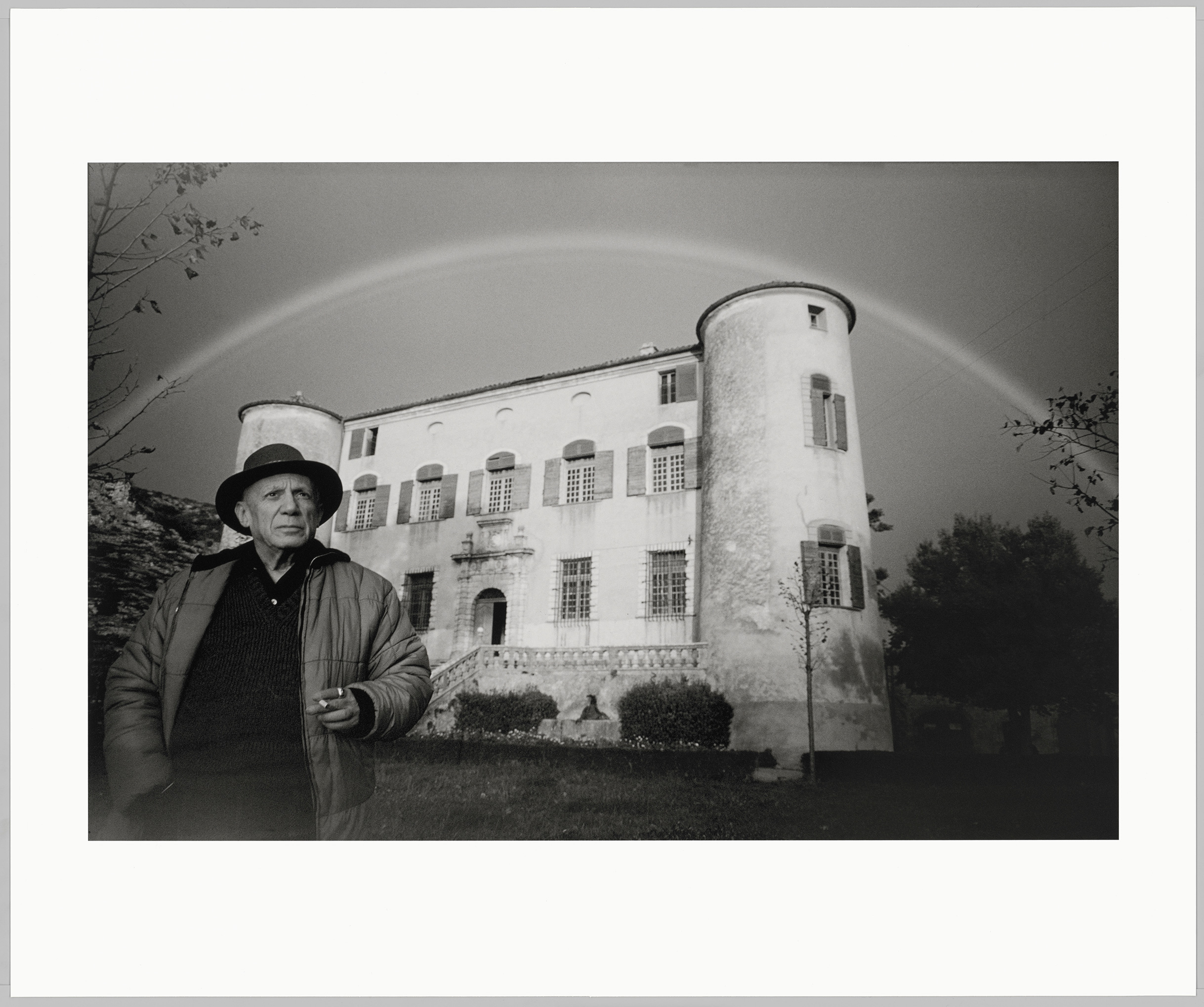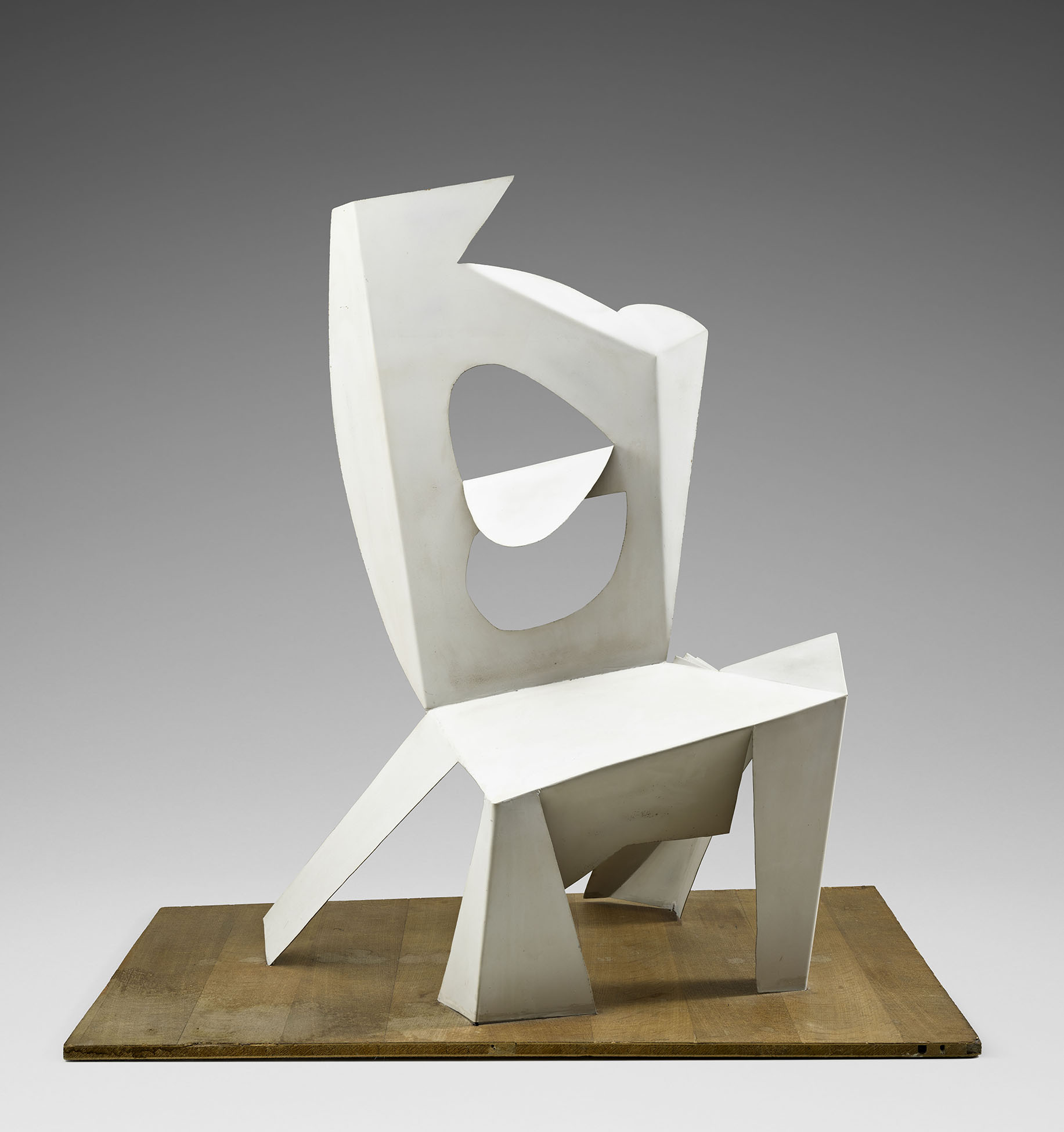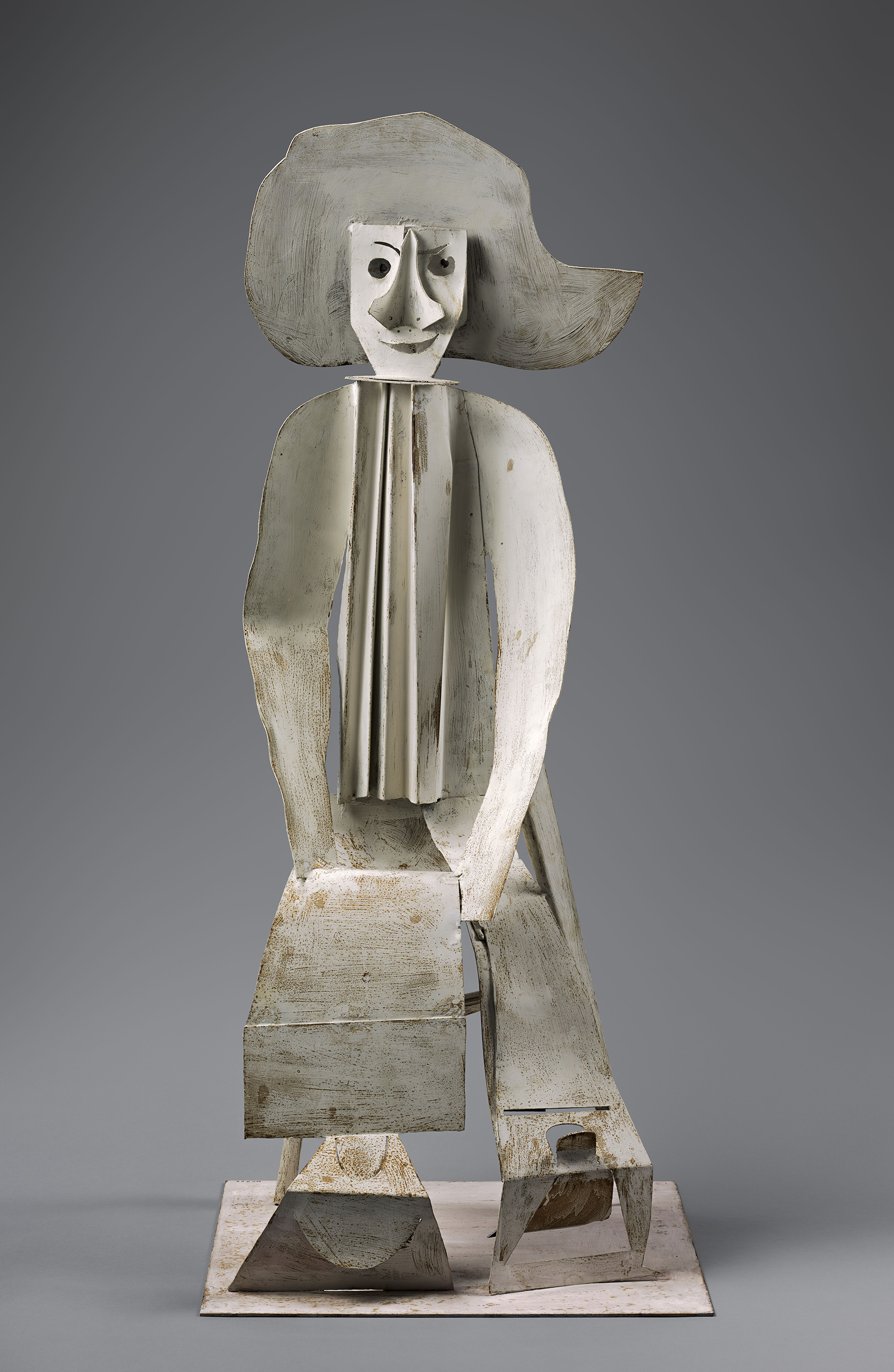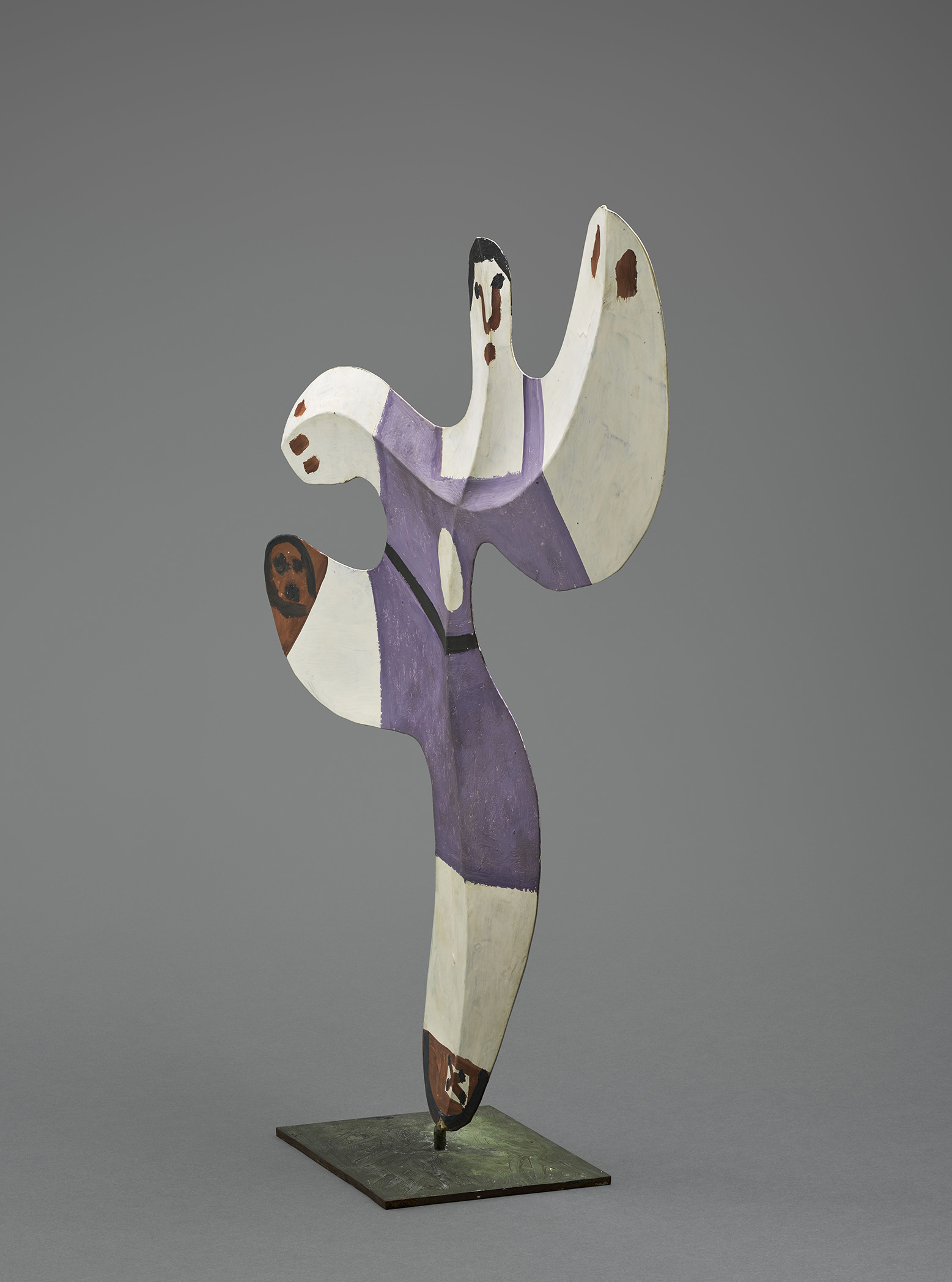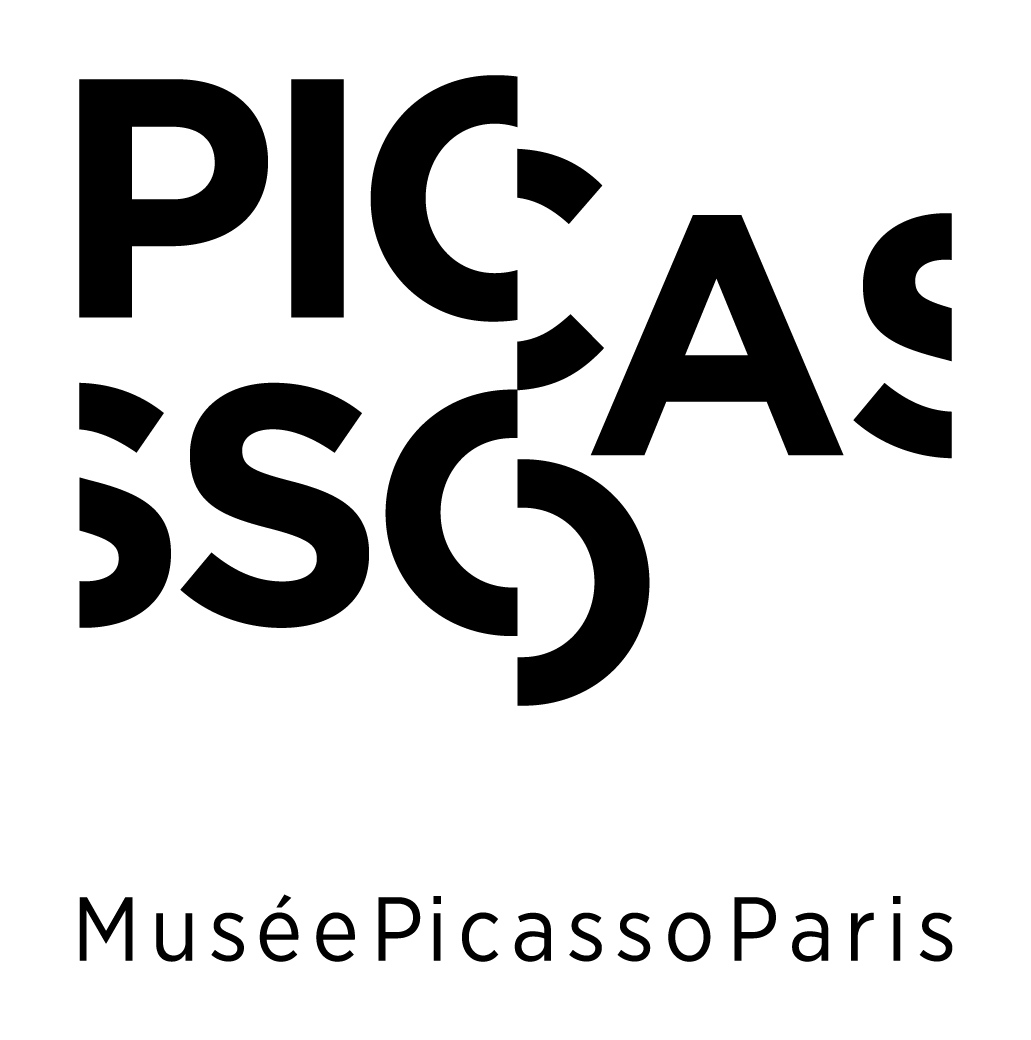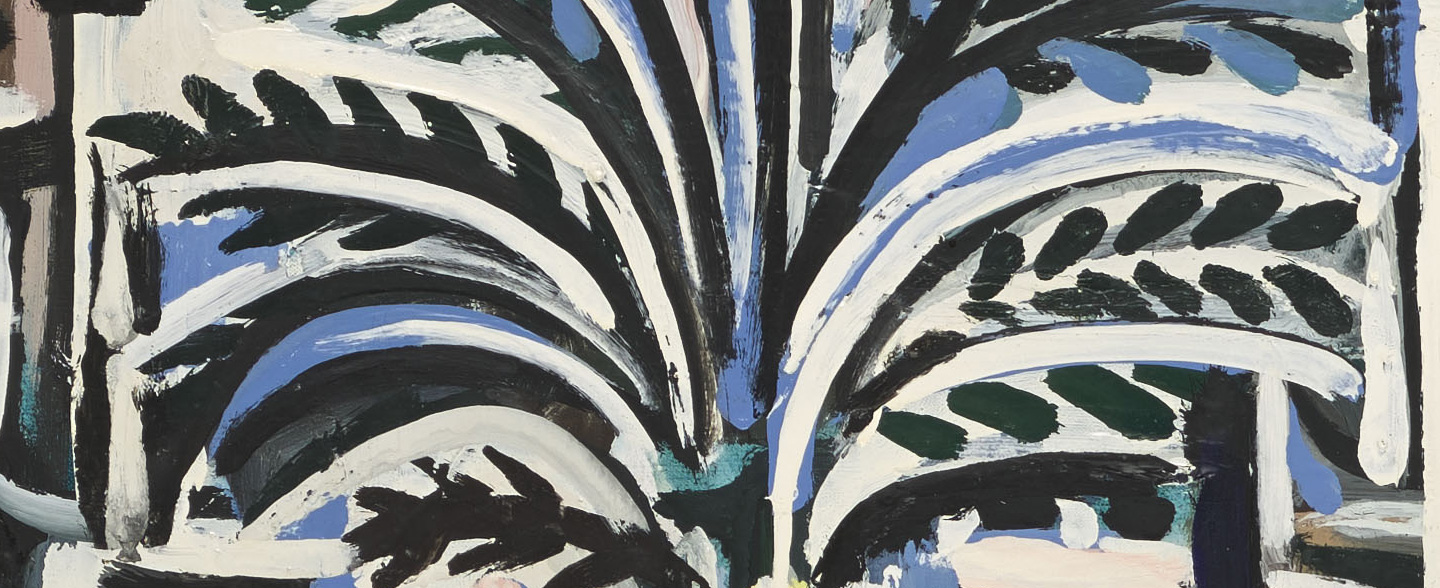The living Mediterranean, the one that Picasso reaches every summer, near which he then lives, bathing in its regenerating waters, to maintain its solar force and its power of transmutation.
In September 1946, Picasso was invited by the curator of the Château Grimaldi - Musée d'Antibes, Romuald Dor de la Souchère, to stay and set up his studio in one of the rooms of the château. He painted some twenty works there, evoking Mediterranean themes, which form part of the museum's collection, now dedicated to Picasso. This symbolic anecdote testifies to the artist's connection with the Mediterranean coast of France. Spending all his summers there since his arrival in France, he settled in the south, and became interested in pottery and ceramics, while continuing to paint, inspired by the landscape and ancient culture that surrounded him. Where and with whom did Picasso live on the Mediterranean coast of France? What were his workshops in the south of France?
Vallauris
1 Roland Penrose, dans sa biographie de 1982 consacrée à Picasso
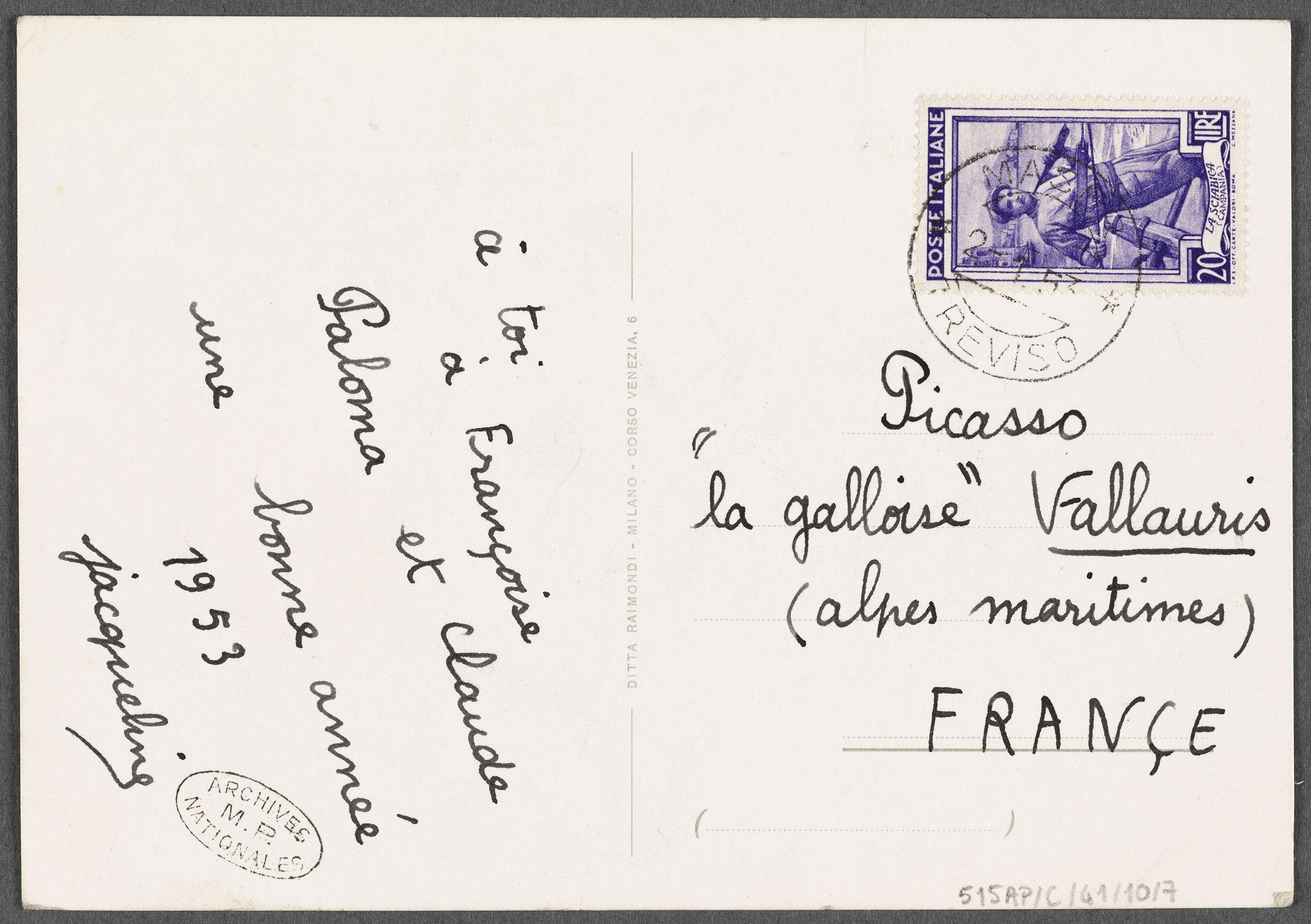
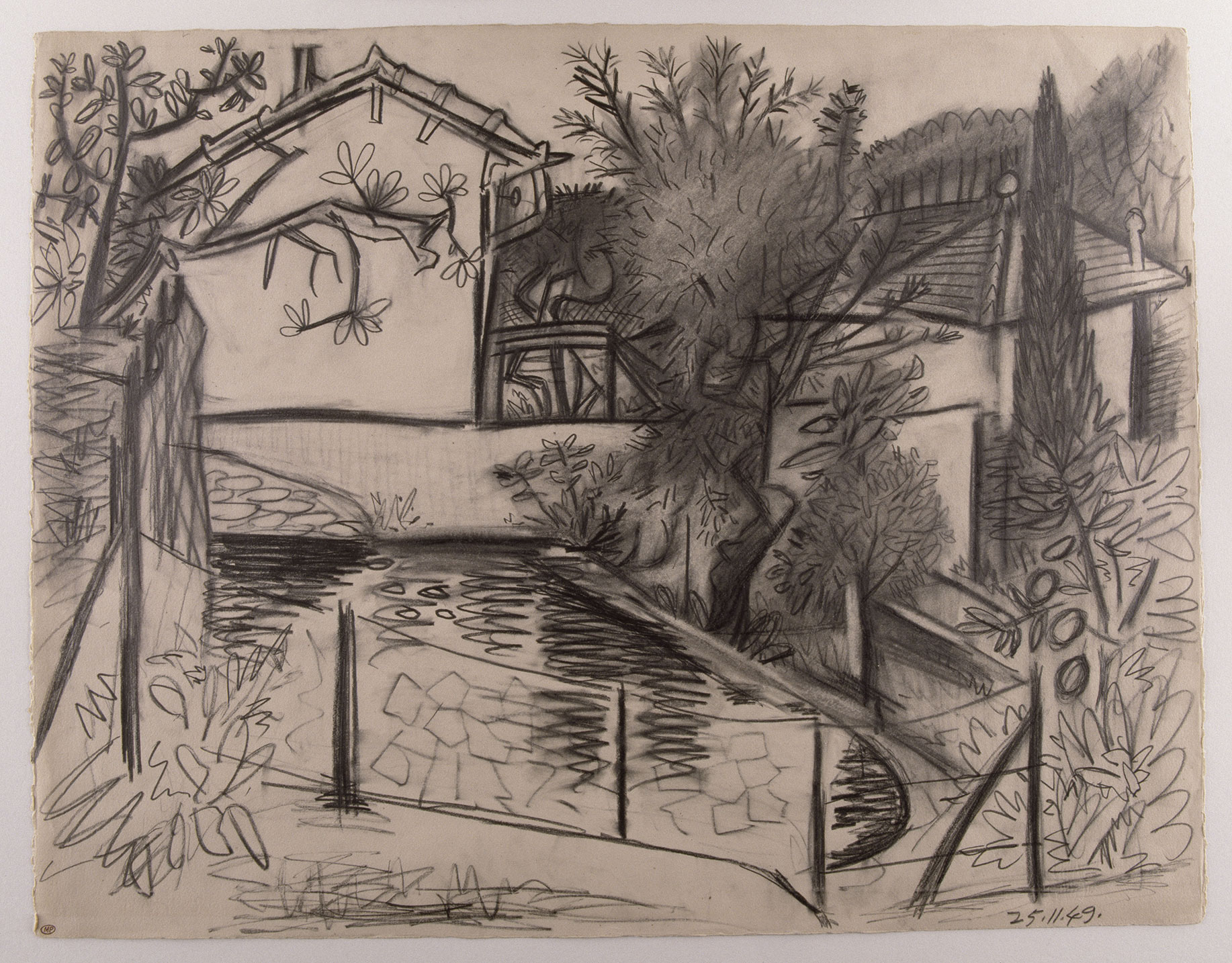
Exploration of others mediums
In parallel with his work as a ceramist, Picasso explored other three-dimensional media. In 1950, he created a series of large plaster sculptures in which he included, for their poetic and plastic value, heterogeneous objects that he diverted from their ordinary use. Picasso actively participated in the development of the city of Vallauris and invested in related projects.
In 1952, he decorated a disused chapel, located near the Place du Marché, where one of his sculptures, "L'Homme au mouton", was installed.
It was also in the 1950s that Picasso created the famous painting "Massacre in Korea" (1951), a large canvas in grisaille, where classical references abound, such as the paintings of Francisco de Goya, Edouard Manet and Puvis de Chavannes. Inspired by the massacre of No Gun Ri, 400 Korean civilians murdered during the Korean War, this painting belongs to the collection of the Musée National Picasso-Paris.
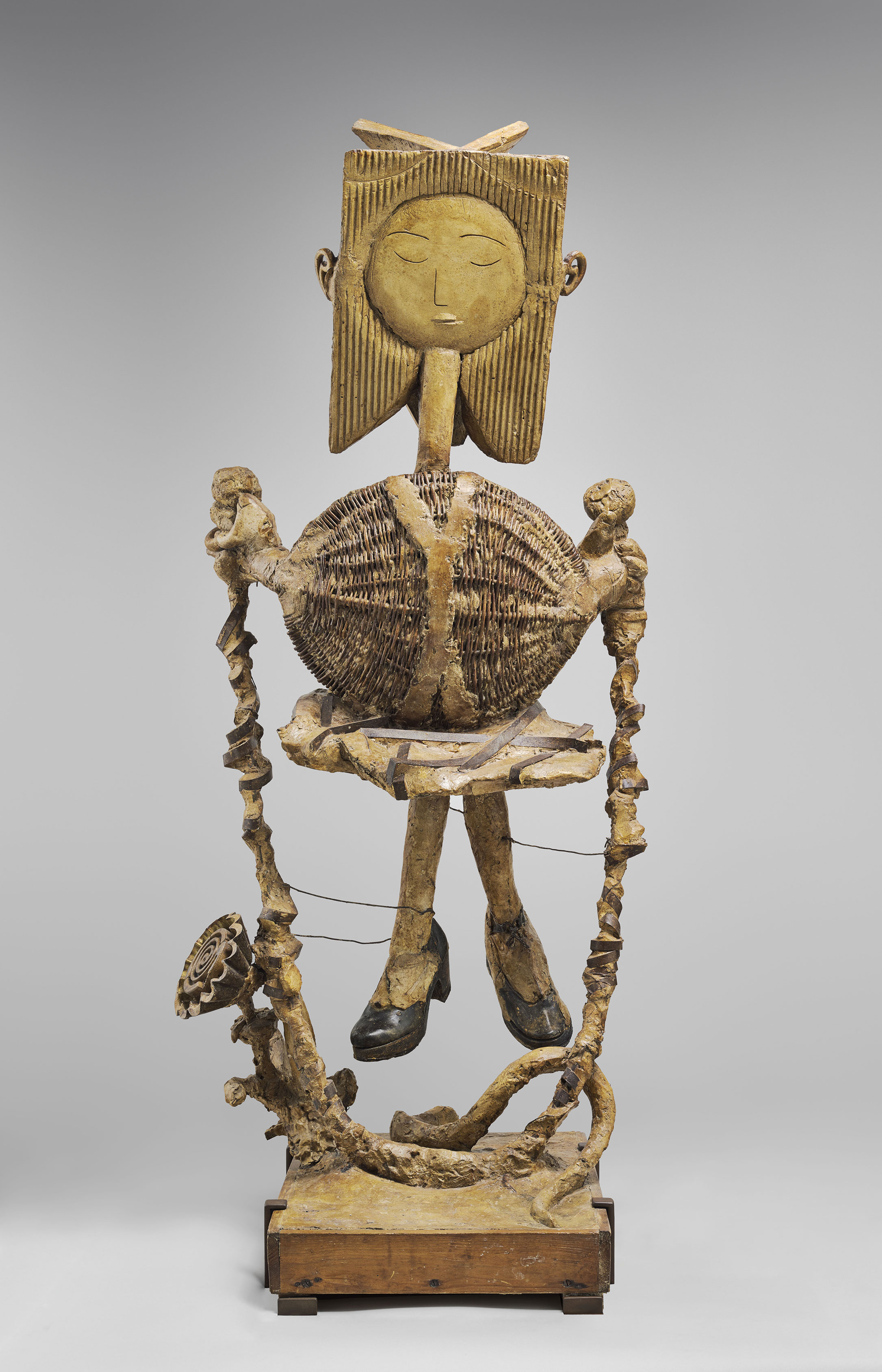
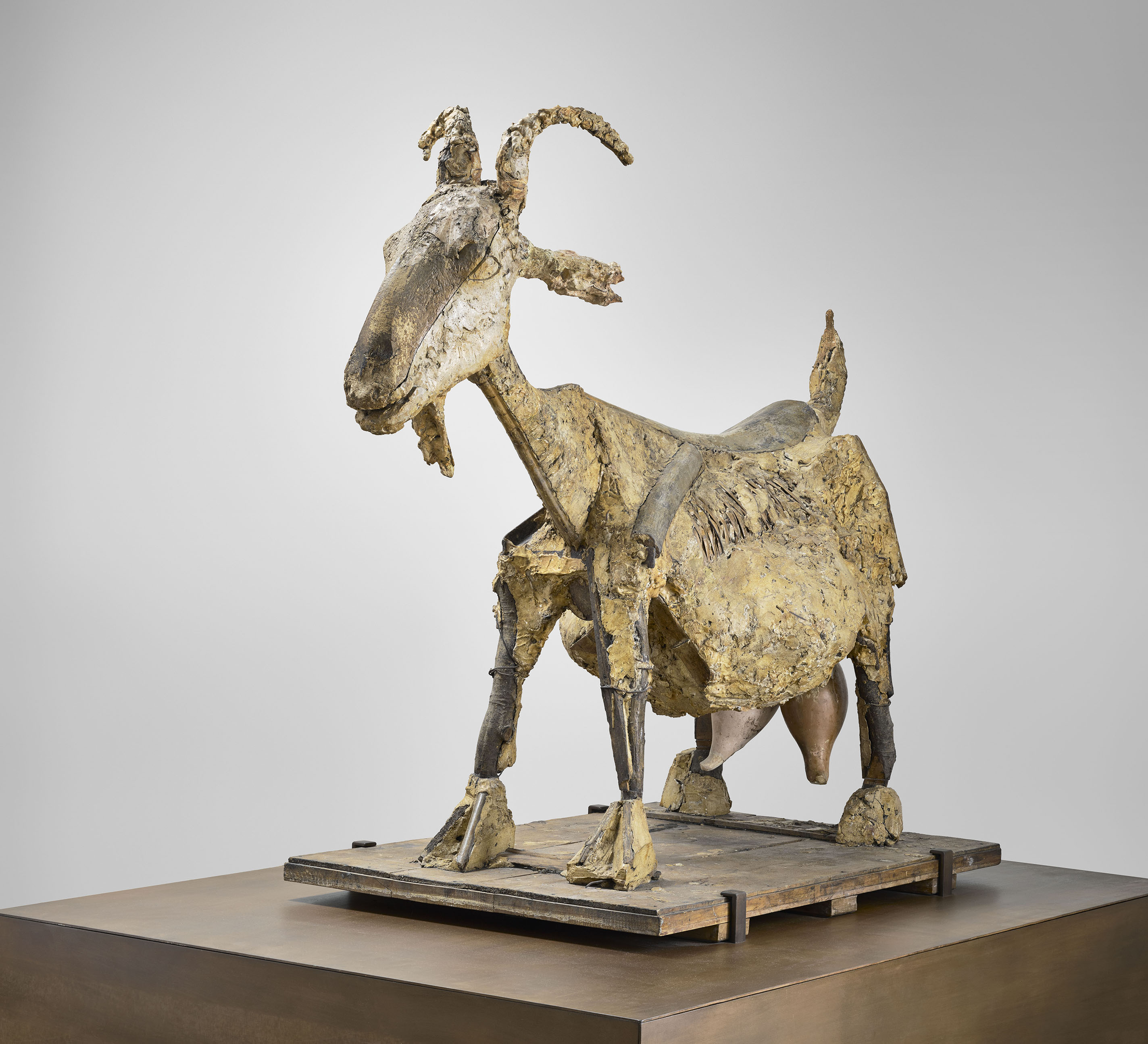
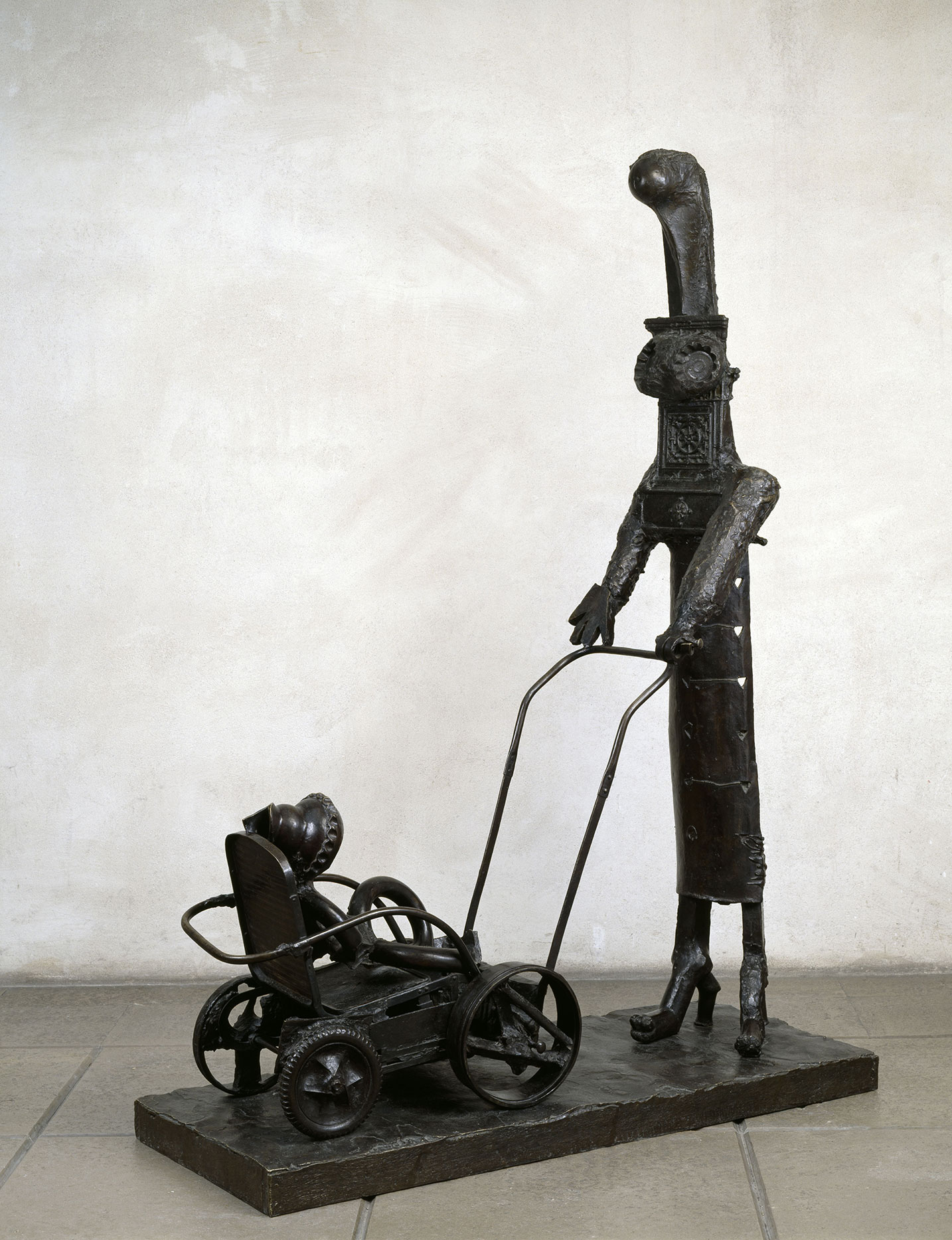
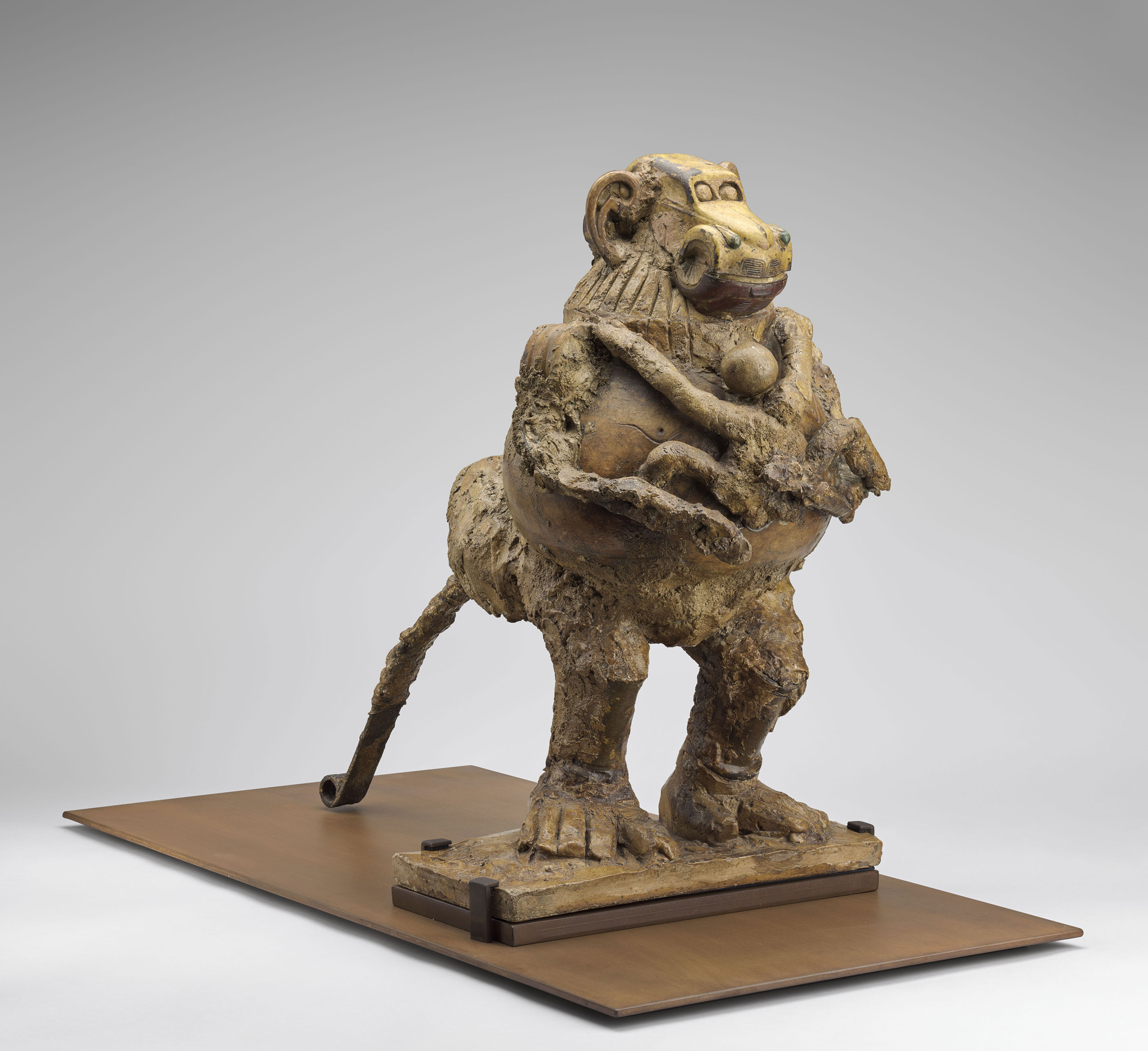
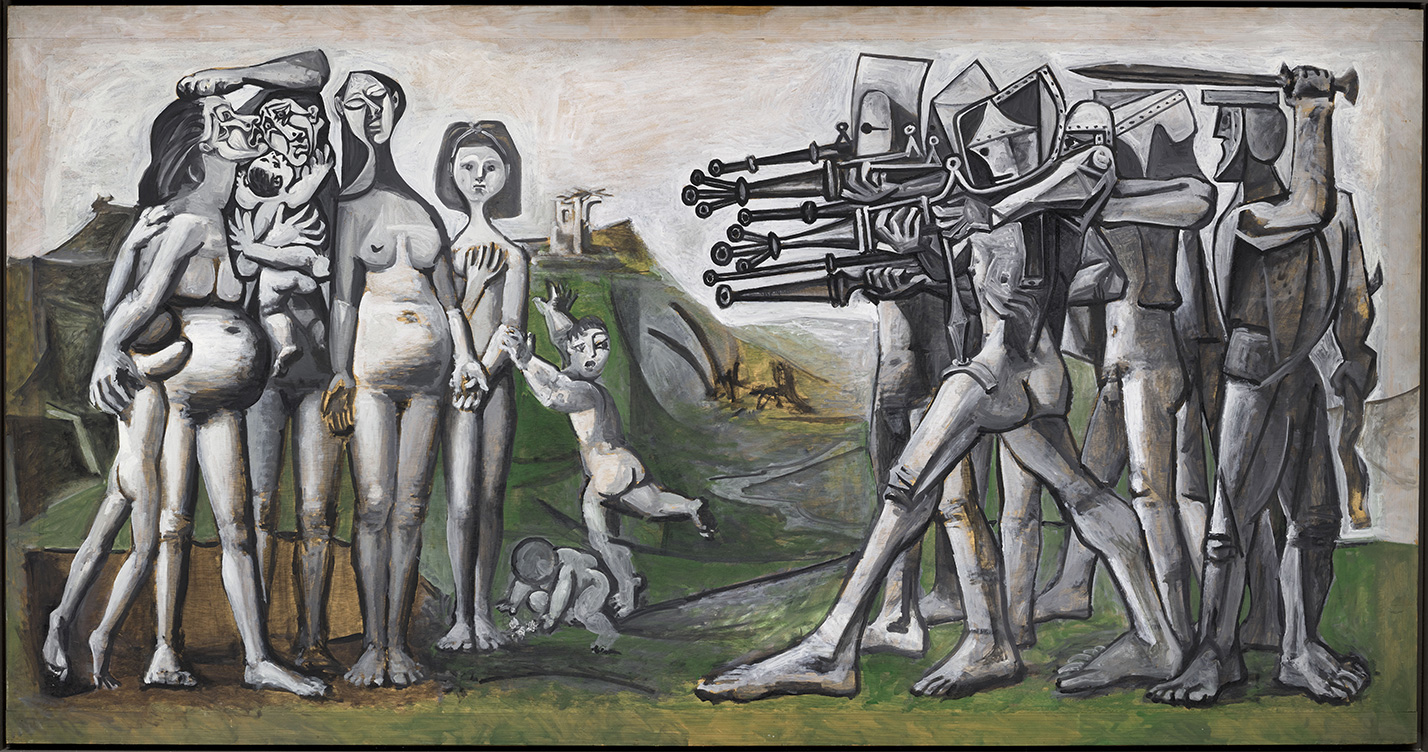
Françoise Gilot (1921-)
Picasso met the young painter Françoise Gilot in a Parisian restaurant in May 1943. Accompanied by Dora Maar, he noticed the young woman sitting at a table, accompanied by a mutual friend who introduced them. For three years, Pablo and Françoise saw each other occasionally, and it was not until 1946 that their relationship became official, when they moved in together. Françoise Gilot was forty years younger than Picasso. She became a model for Picasso, who often represented her as a "flower-woman". They have two children, Claude born in 1947 and Paloma born in 1949. The relationship with Françoise Gilot ended in 1953.
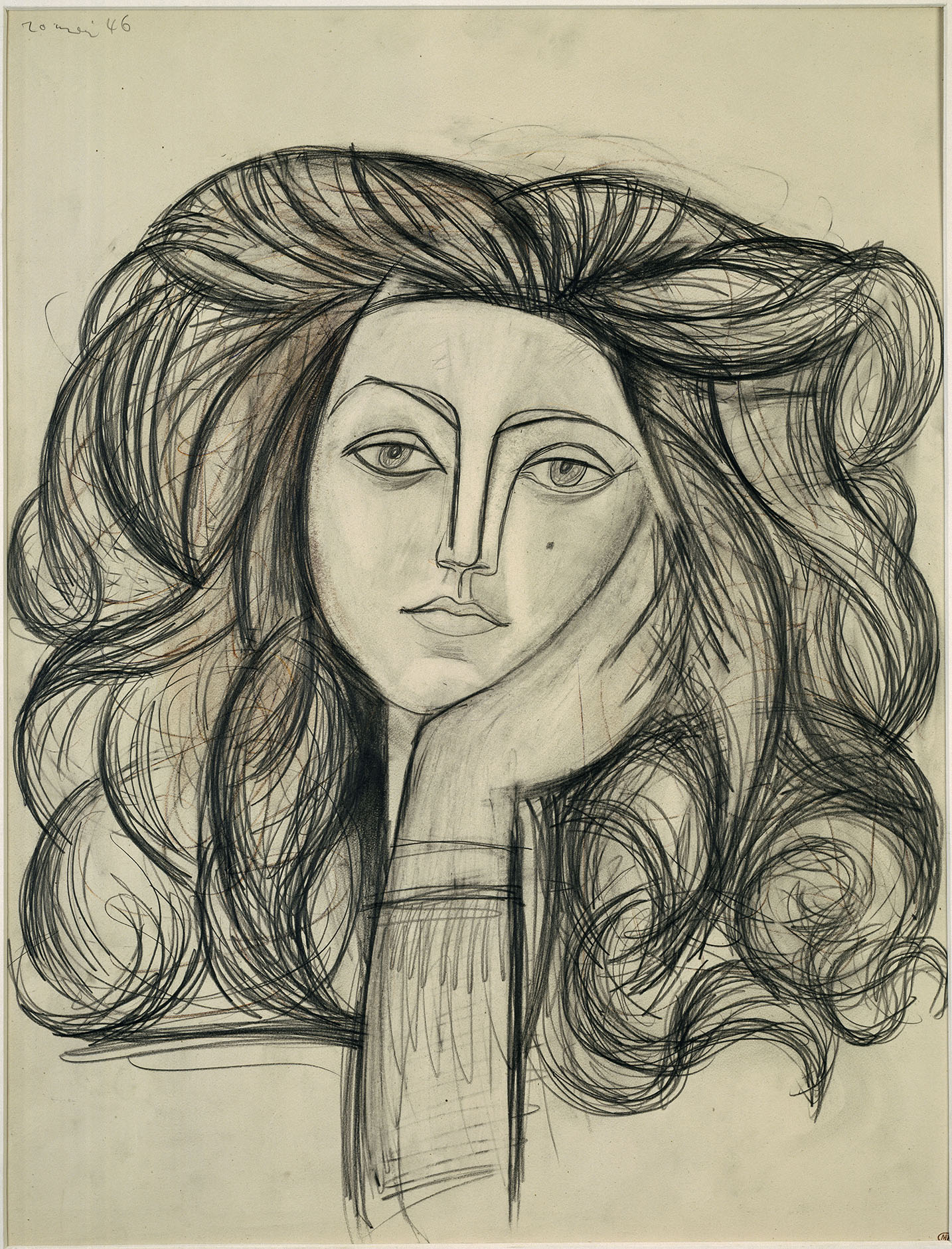
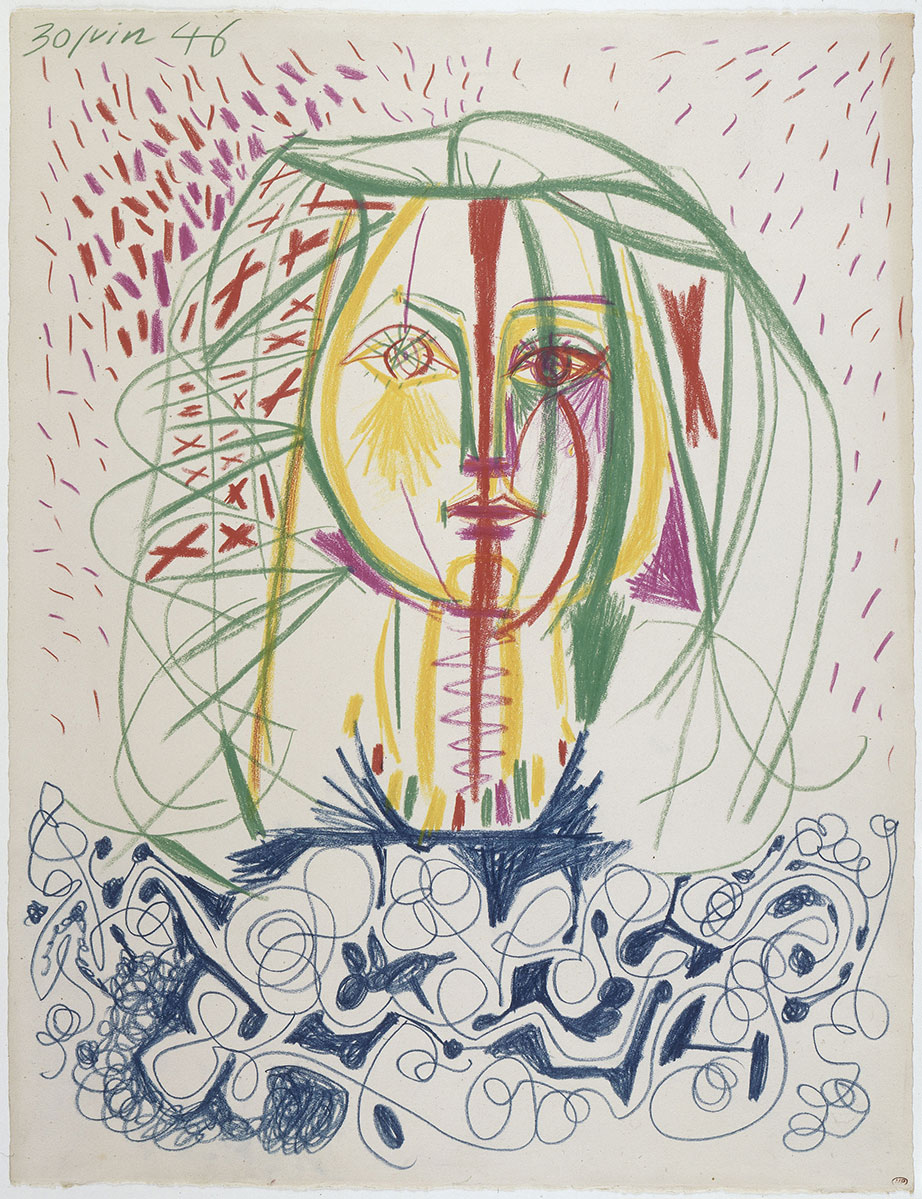
Jacqueline Roque (1927-1986)
Jacqueline Roque met Pablo Picasso in the summer of 1952 while working at the Madoura gallery - Jacqueline being a relative of Suzanne Ramié. The last model and companion of the painter, Jacqueline shared the last twenty years of Picasso's life, becoming his wife in 1961. The figure of Jacqueline is indeed present in Picasso's work from the summer of 1954 and reappears successively in the various studios occupied by the couple, from La Californie, to the mas Notre-Dame-de-Vie, through the castle of Vauvenargues. Identifiable by her black almond-shaped eyes, long brown hair and haughty bearing, Jacqueline became the archetype of the Mediterranean female portrait.
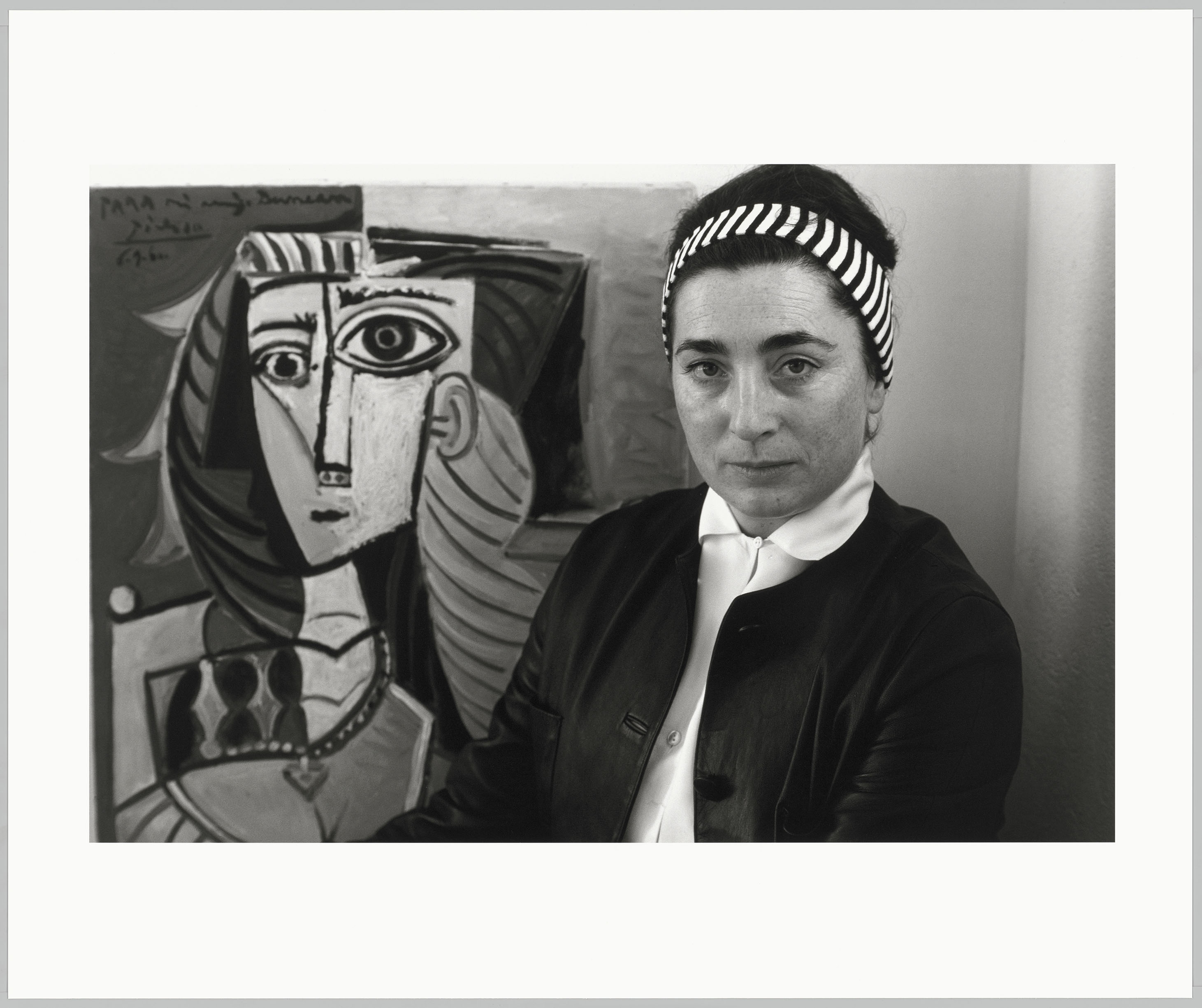
The revival of masterpieces
The 1950s marked a great period of classical references in Picasso's production. After several trips back and forth between Paris and the south of France, the artist was inspired by the great paintings that had marked the history of art. Many of his notebooks bear witness to this, with drawings taken directly from masterful paintings. Between 1954 and 1967, he began several series of variations on three iconic painters: Eugène Delacroix, Diego Velasquez and Edouard Manet, as well as more occasional series on Jacques-Louis David, Nicolas Poussin and Gustave Courbet.
In 1966, he drew and painted figures of Musketeers, inspired by the gentlemen of the Spanish Golden Age portrayed by Velazquez. His series of drawings in black or in color as well as several series of etchings feature caricatures, erotic drawings, burlesque moments, or graphically comment on certain great paintings such as Ingres' Jupiter and Thetis or Rembrandt's self-portraits.
At the same time, he was evicted from his studio in the rue des Grands-Augustins, where he had been a tenant since early 1937.
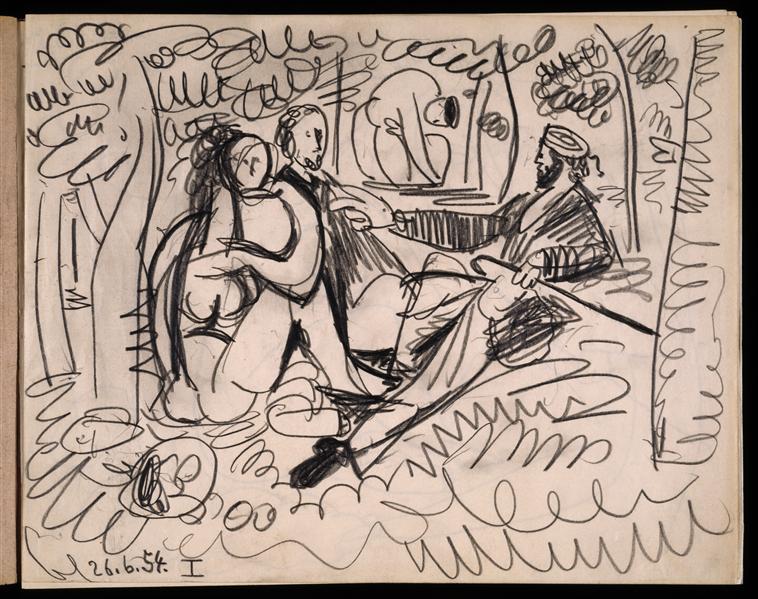
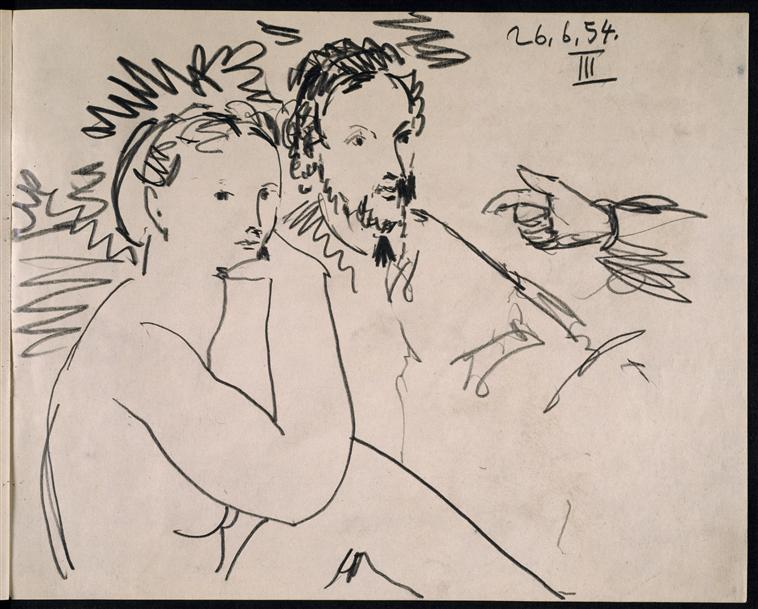
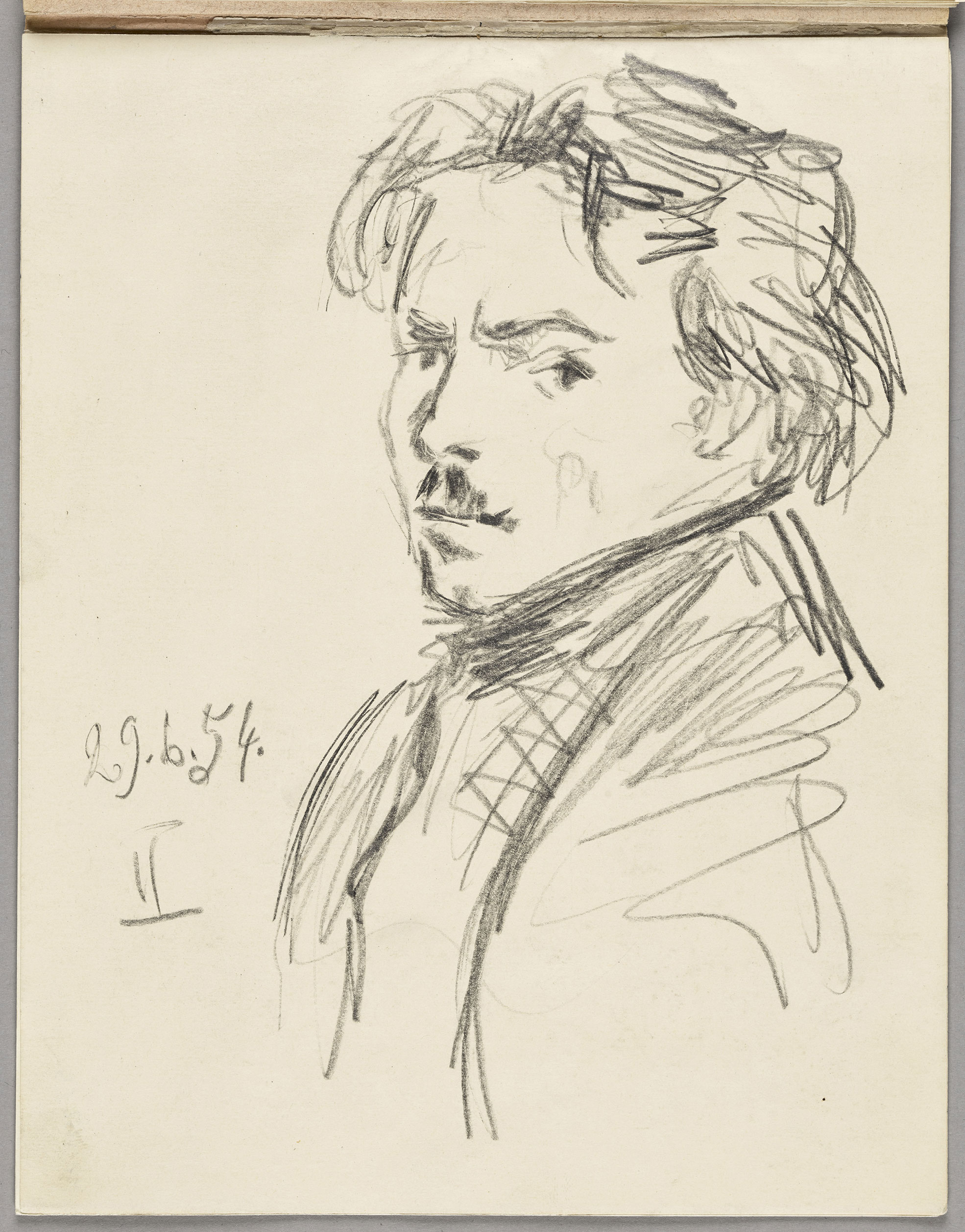
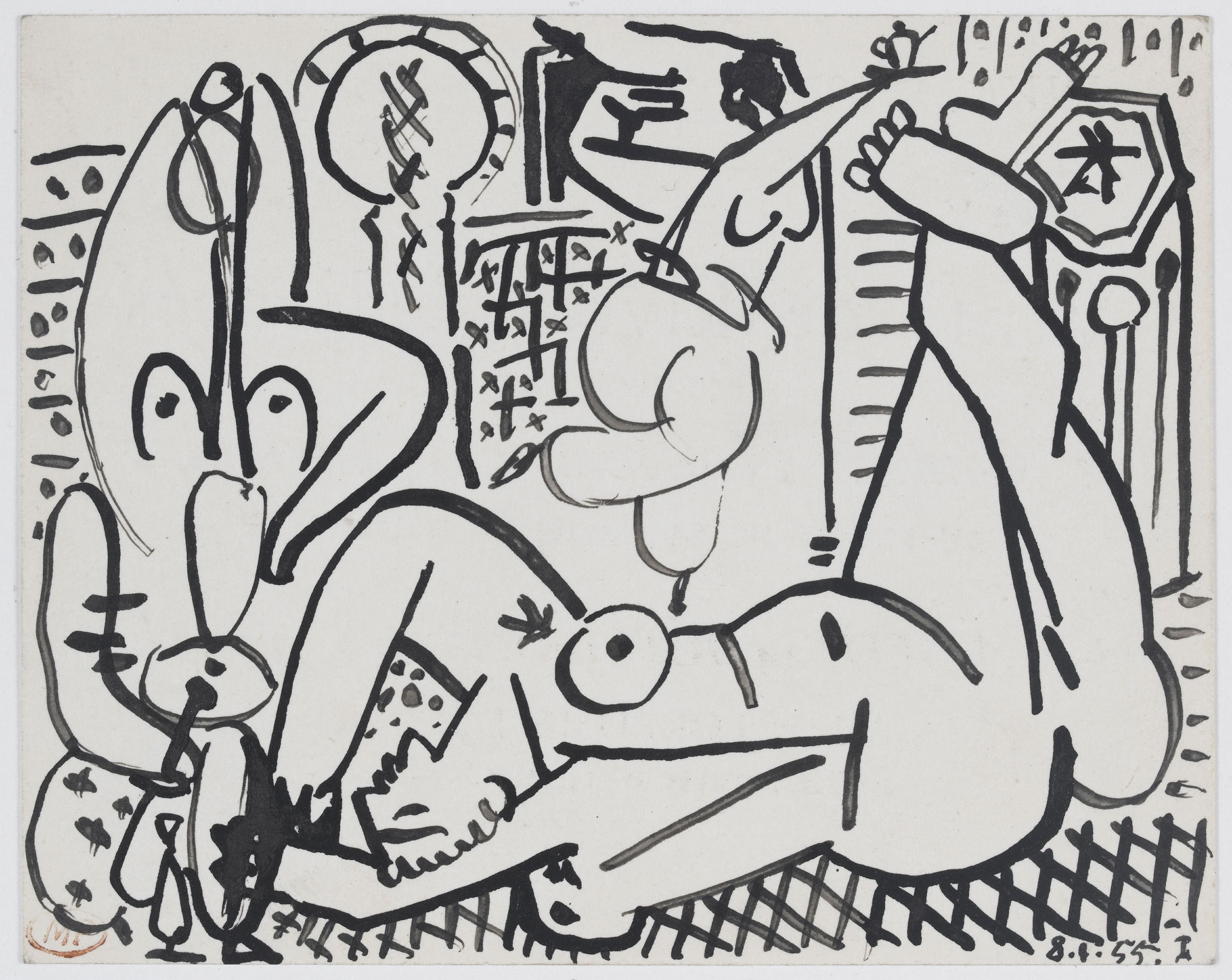
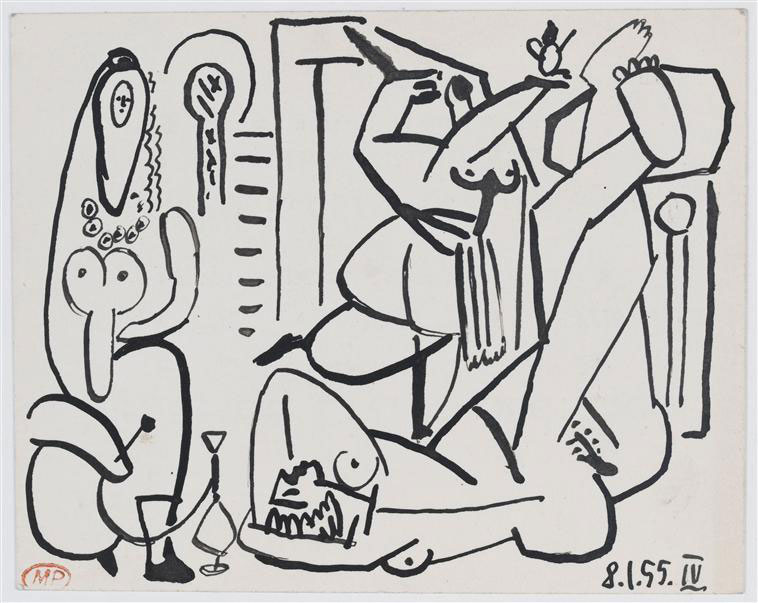
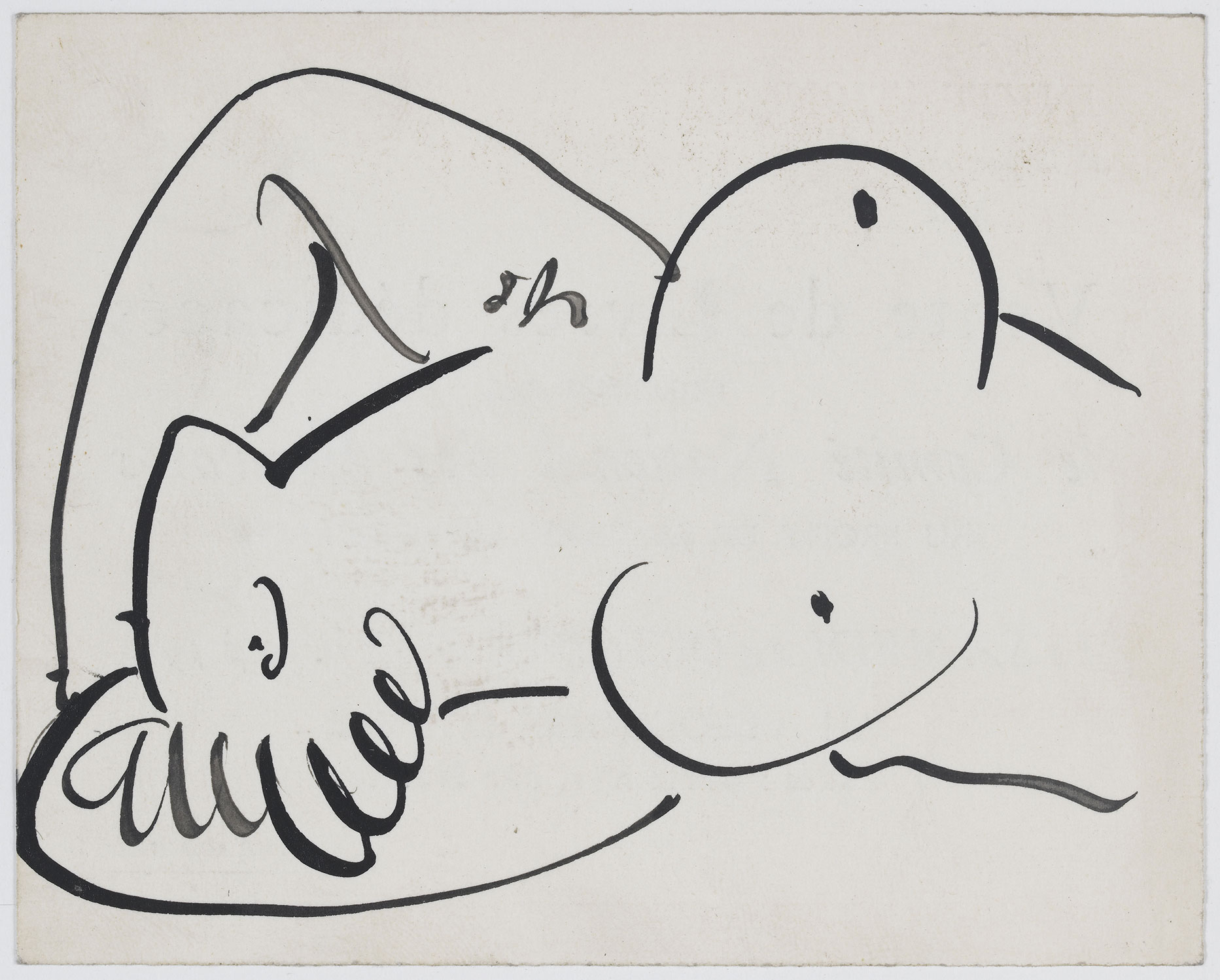
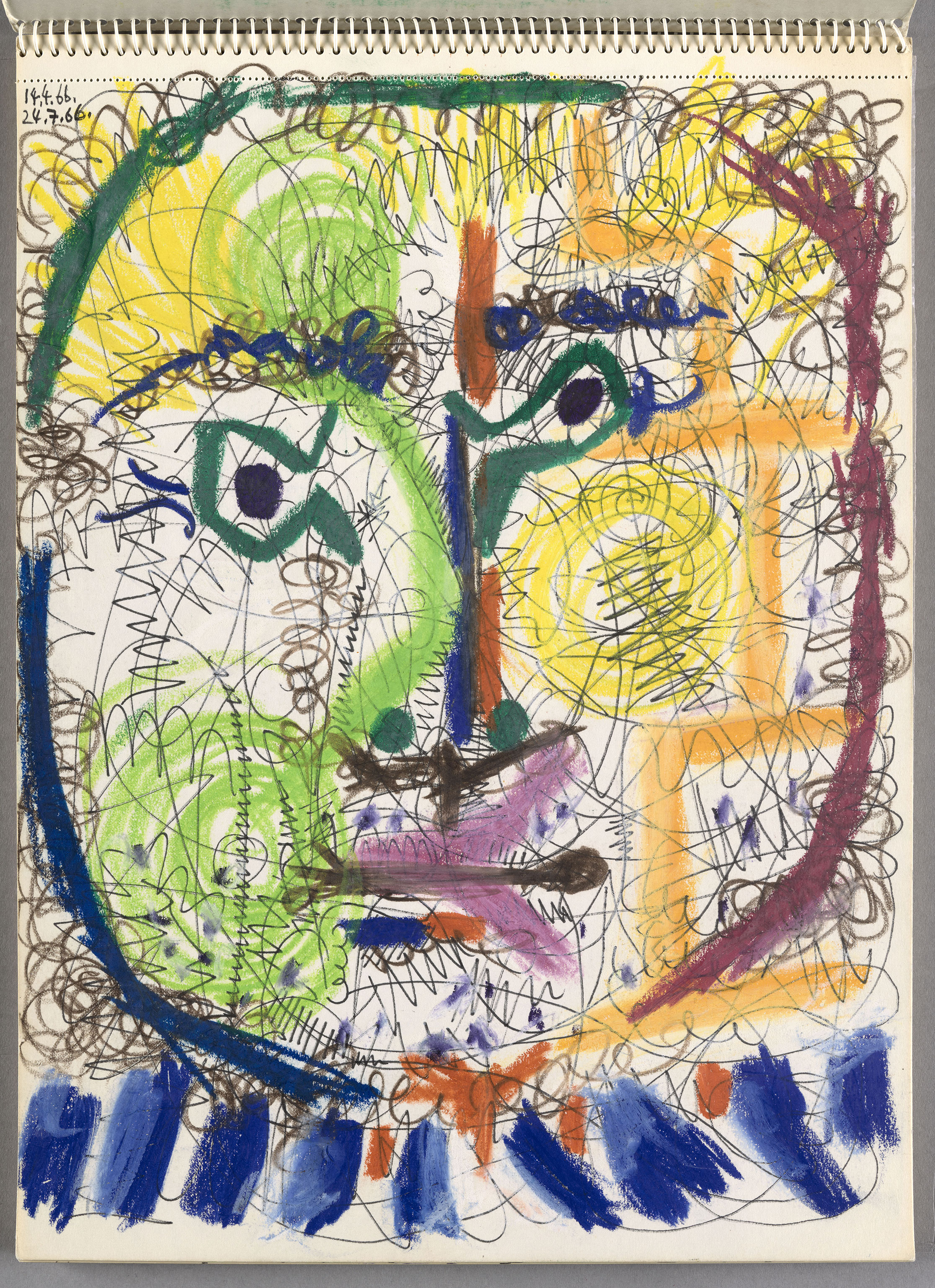
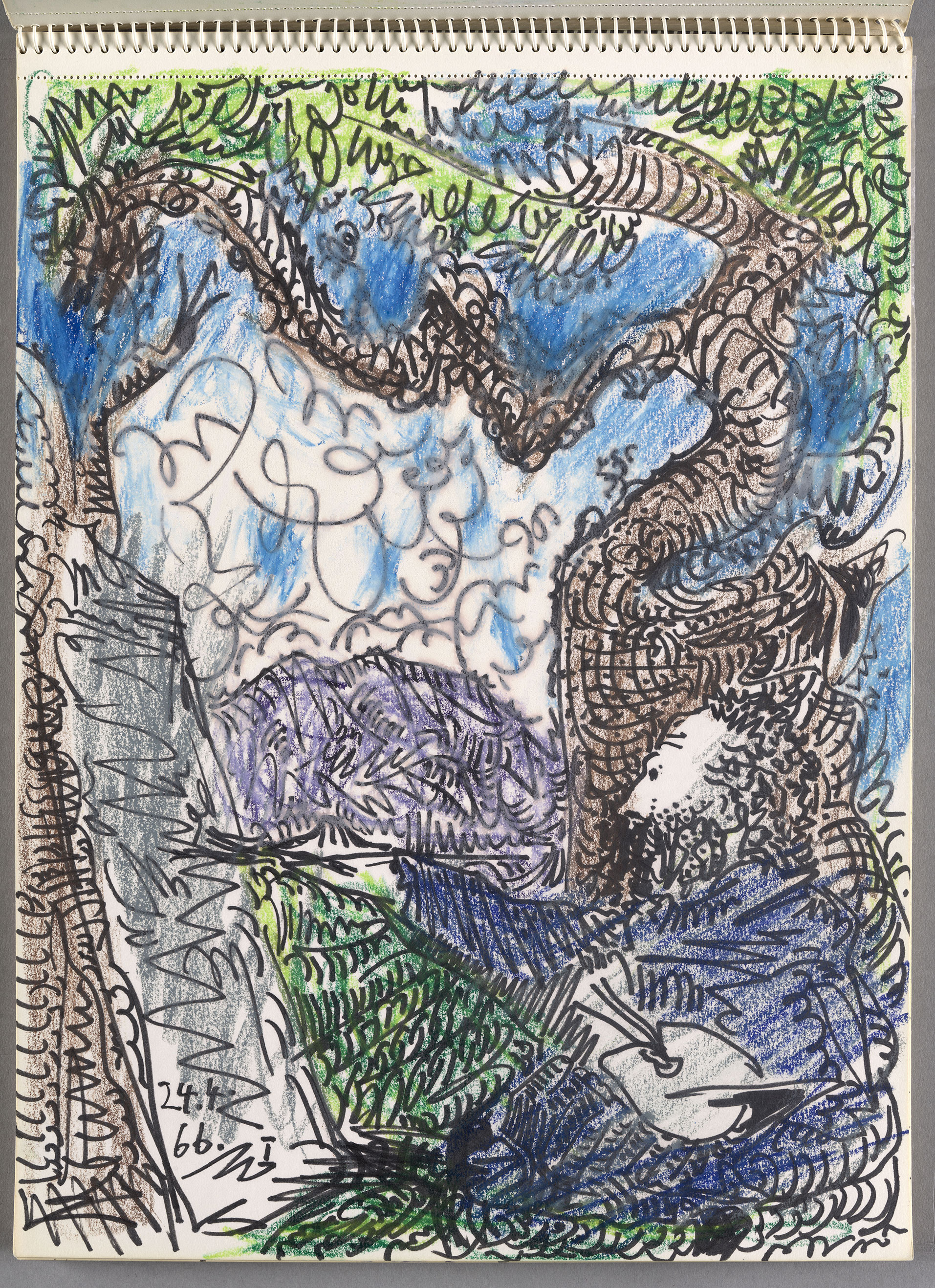
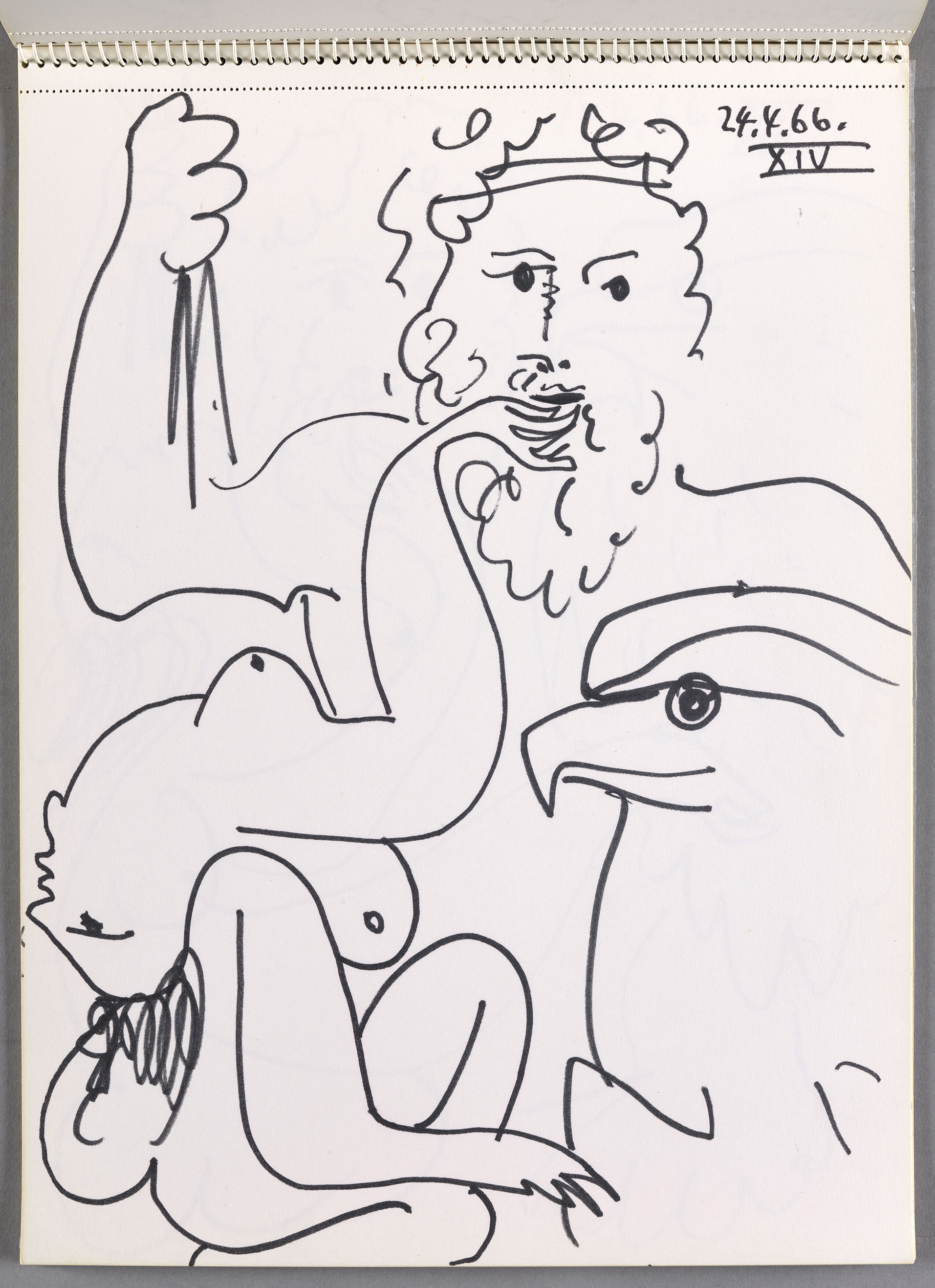
La Californie
In 1955, Pablo Picasso left Vallauris to settle in the villa La Californie, located a few kilometers above Cannes with his partner Jacqueline Roque. The villa, hidden behind its gates and its exotic garden, allows Picasso to quickly appropriate the place by installing his studio in the living room, which is gradually filled with works, various objects and his personal collection. Picasso also painted upstairs, the upper balcony overlooking the bay of Cannes and the islands of Lérins to the delight of the artist, who tinted his painting "The Bay of Cannes" (1958, MP212) a beautiful sea blue. At La Californie, living spaces and studio intermingle, to the benefit of the painter's overflowing creativity: Picasso used the decorative elements of the villa in his paintings, which he described as "interior landscapes".
The place itself becomes a model of representation for Picasso: he uses the space as a reflection of the evolution of his works. Thus, the statues scattered in the garden translate their different stages of mutation. For Daniel-Henry Kahnweiler, who regularly visited him in those years, "the Mediterranean represented for him his new homeland.
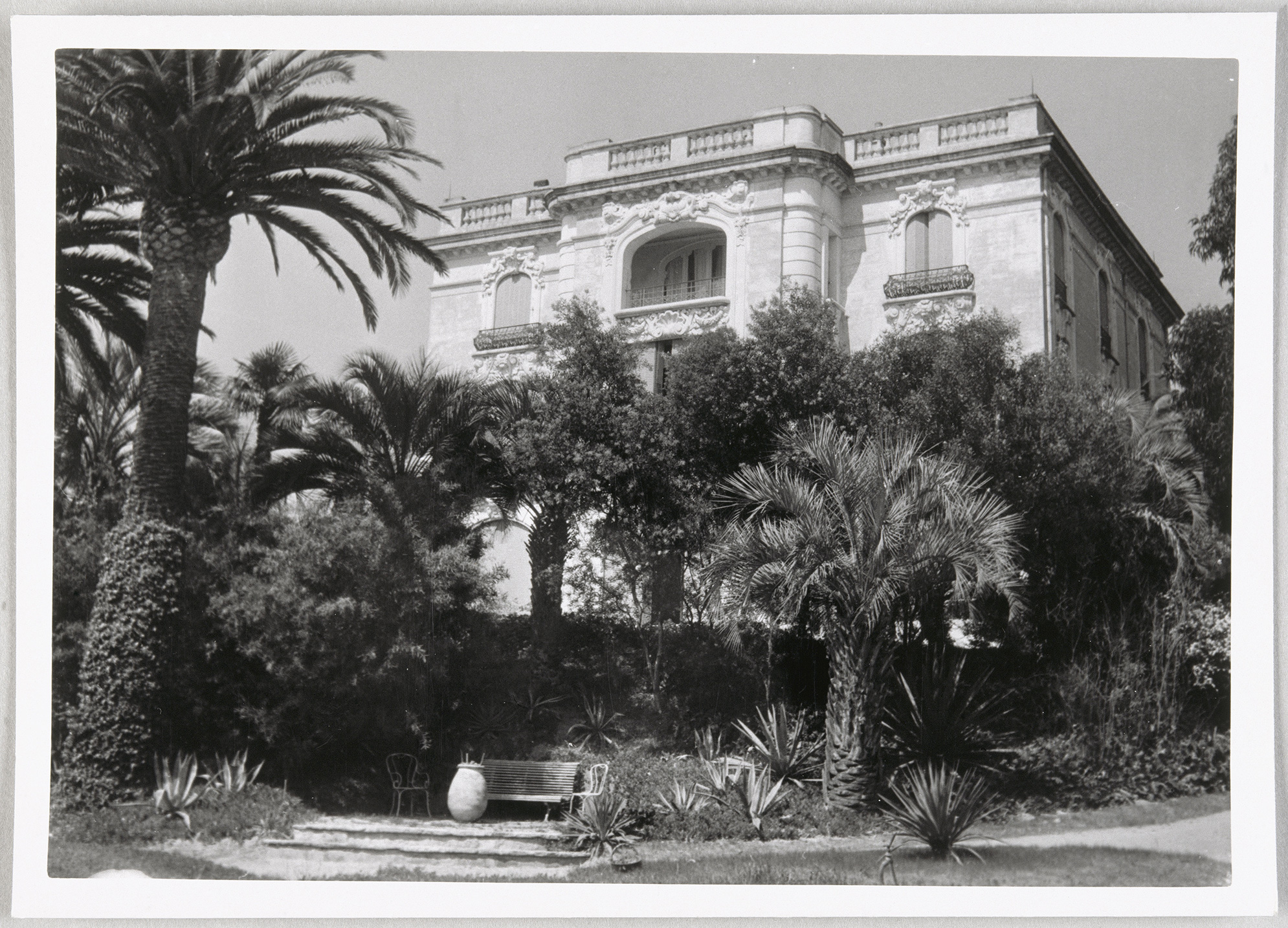
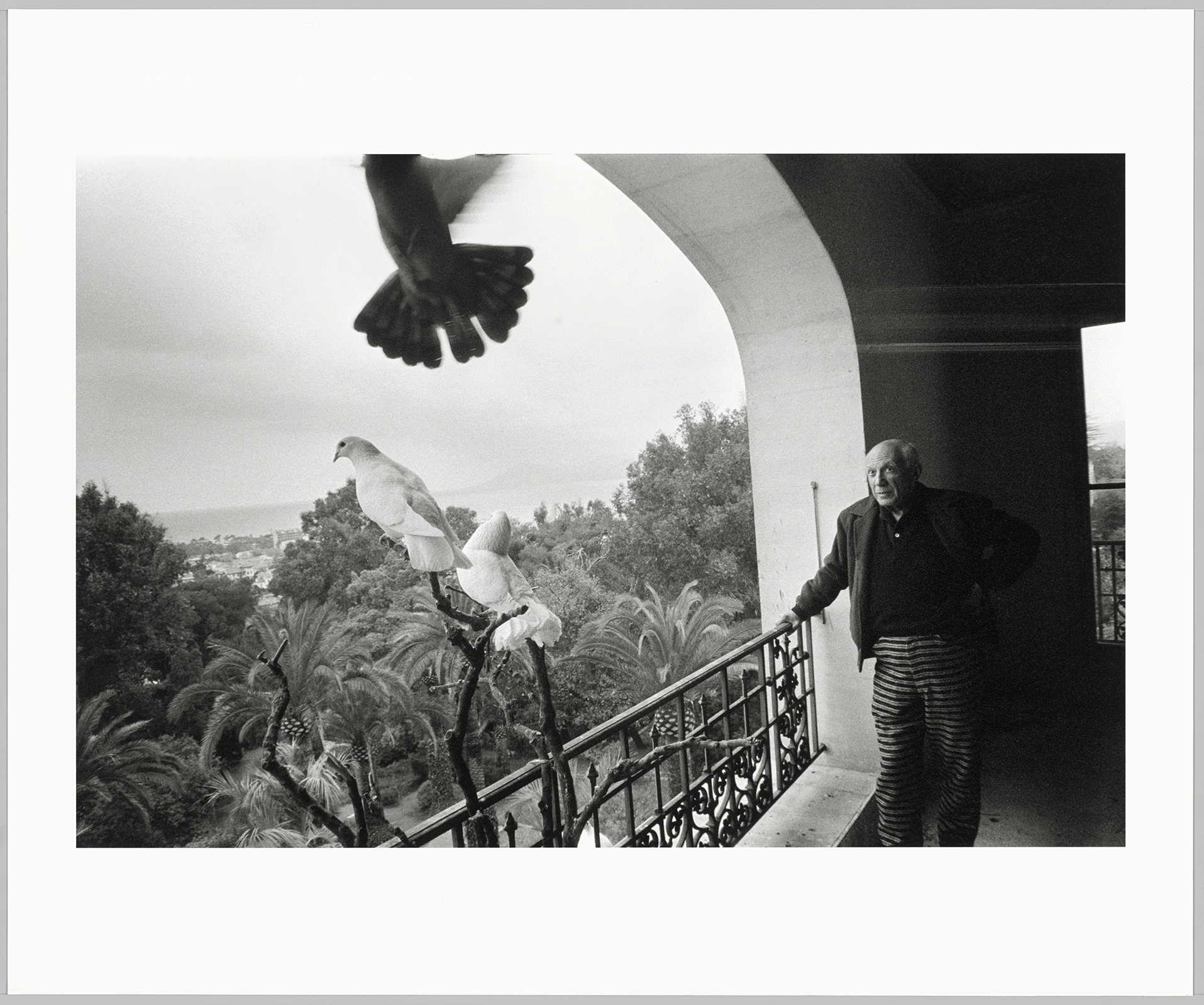
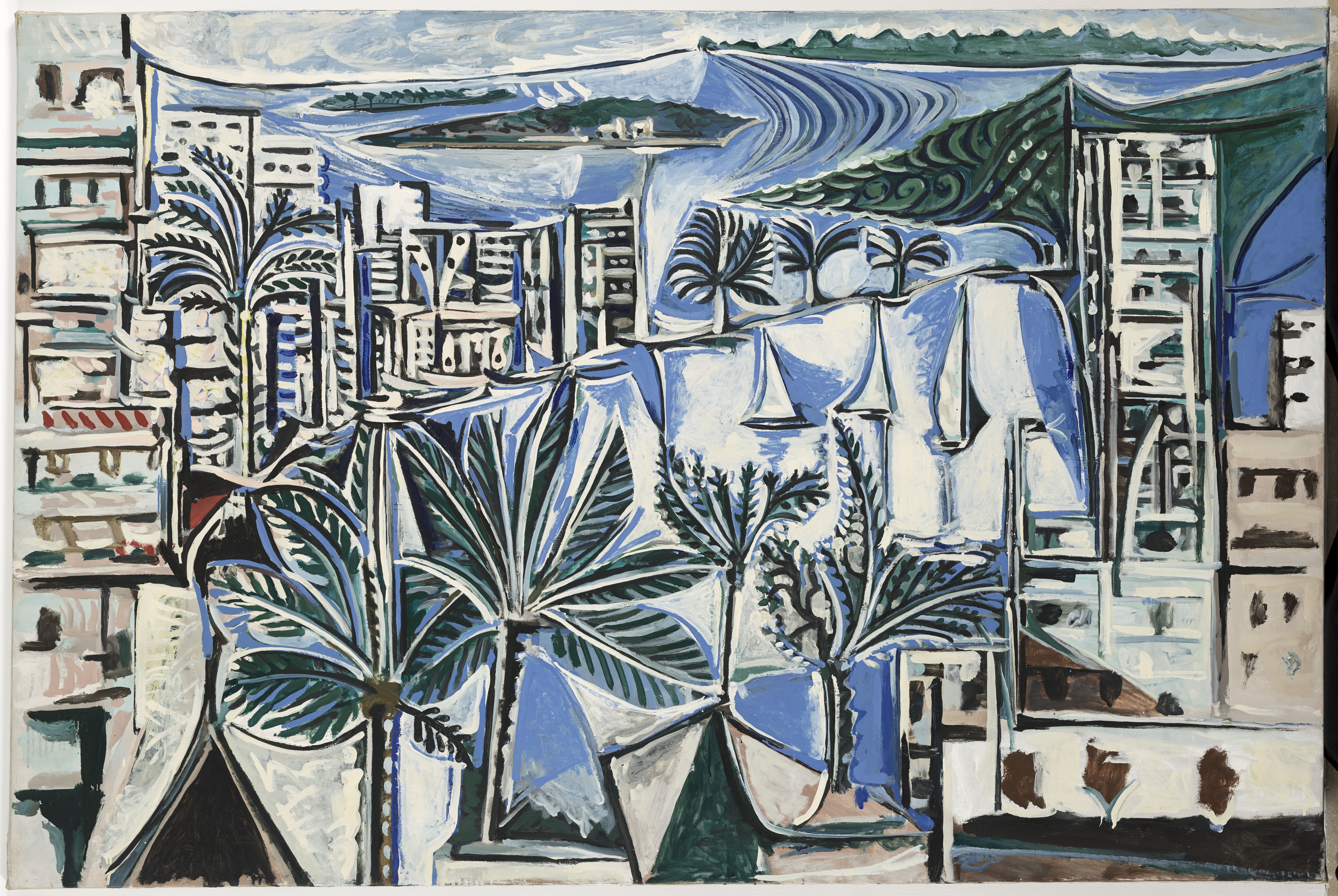
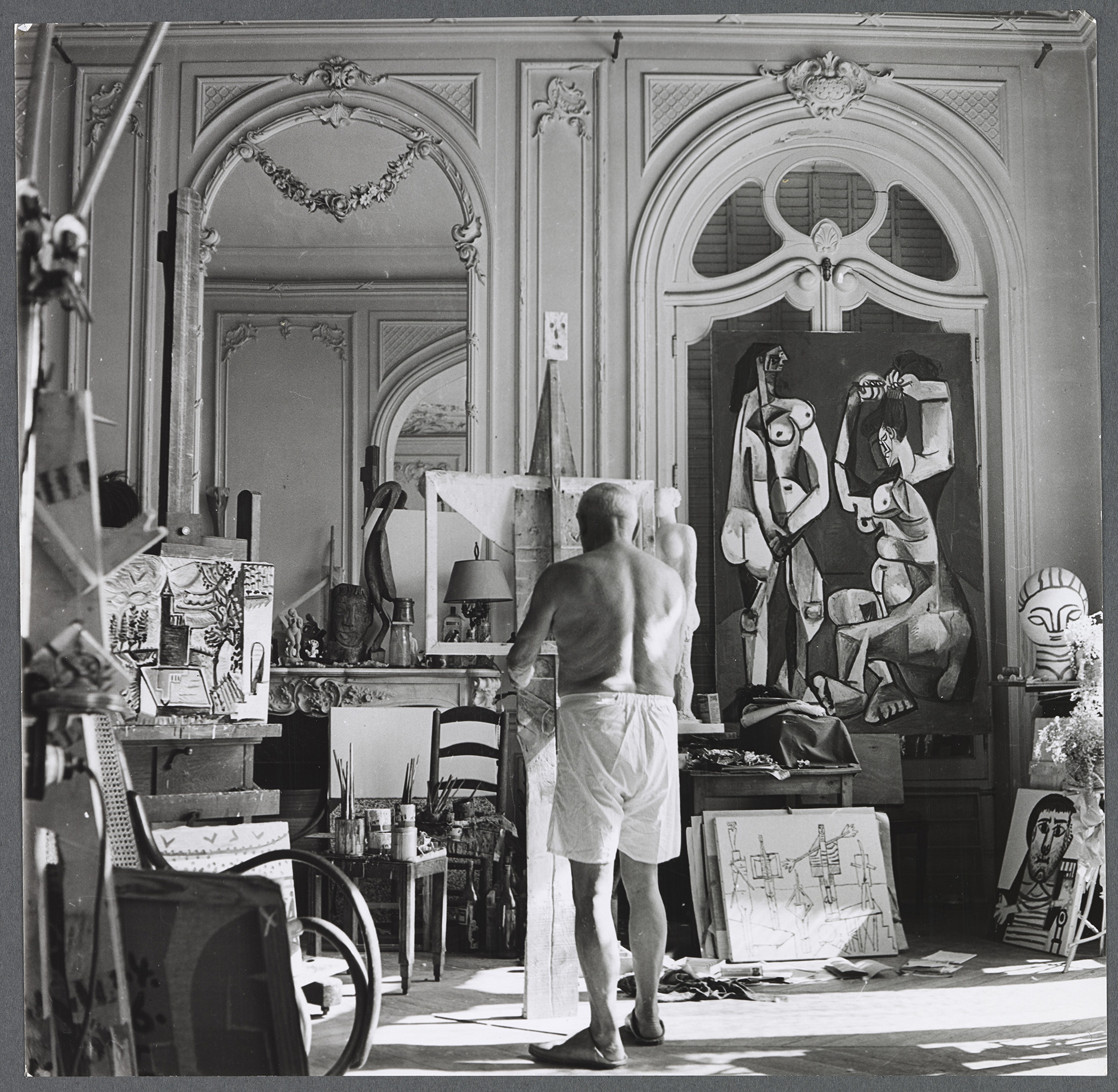
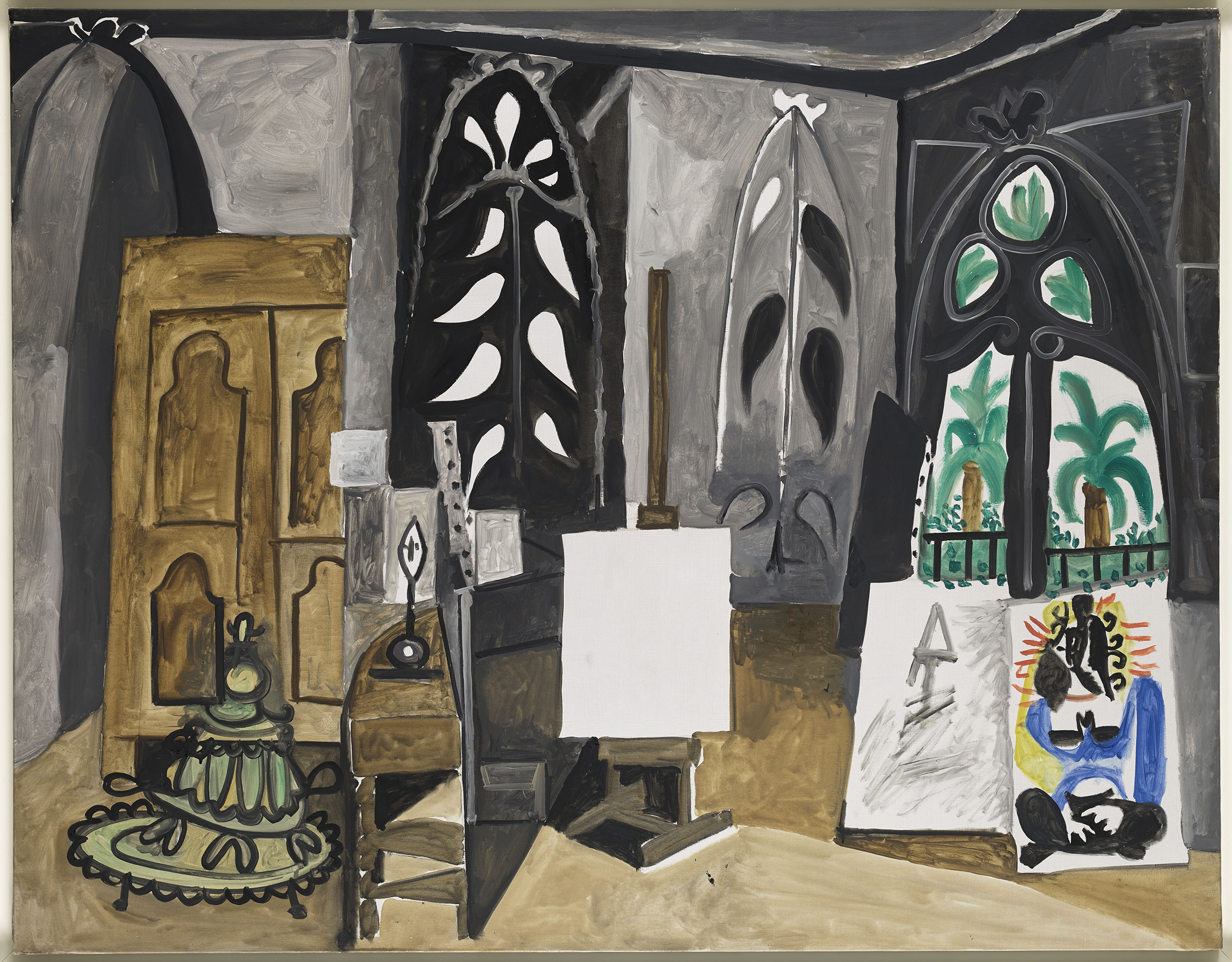
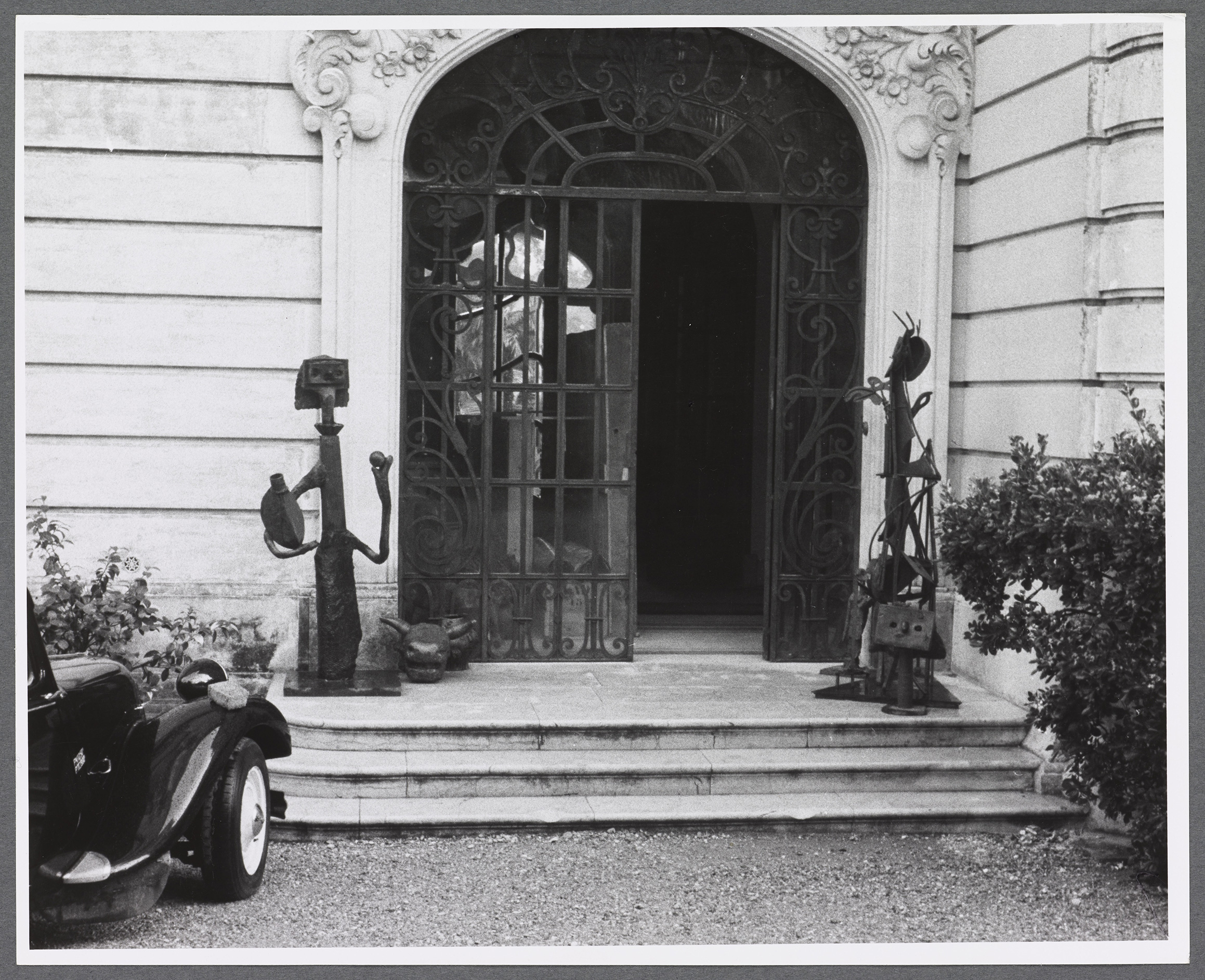
Le Mystère Picasso
After a lot of media attention, the painter found in this house a lull opposite the tumult of the Croisette. This does not prevent curious tourists from flocking to the gates of the villa every summer. Many friends and acquaintances spend time with the couple at La Californie. David Douglas Duncan photographed the intimacy of the painter, but also Henri-Georges Clouzot, who shot the film "Le Mystère Picasso" at the Victorine studio in Nice, presented at the Cannes Film Festival in 1956.
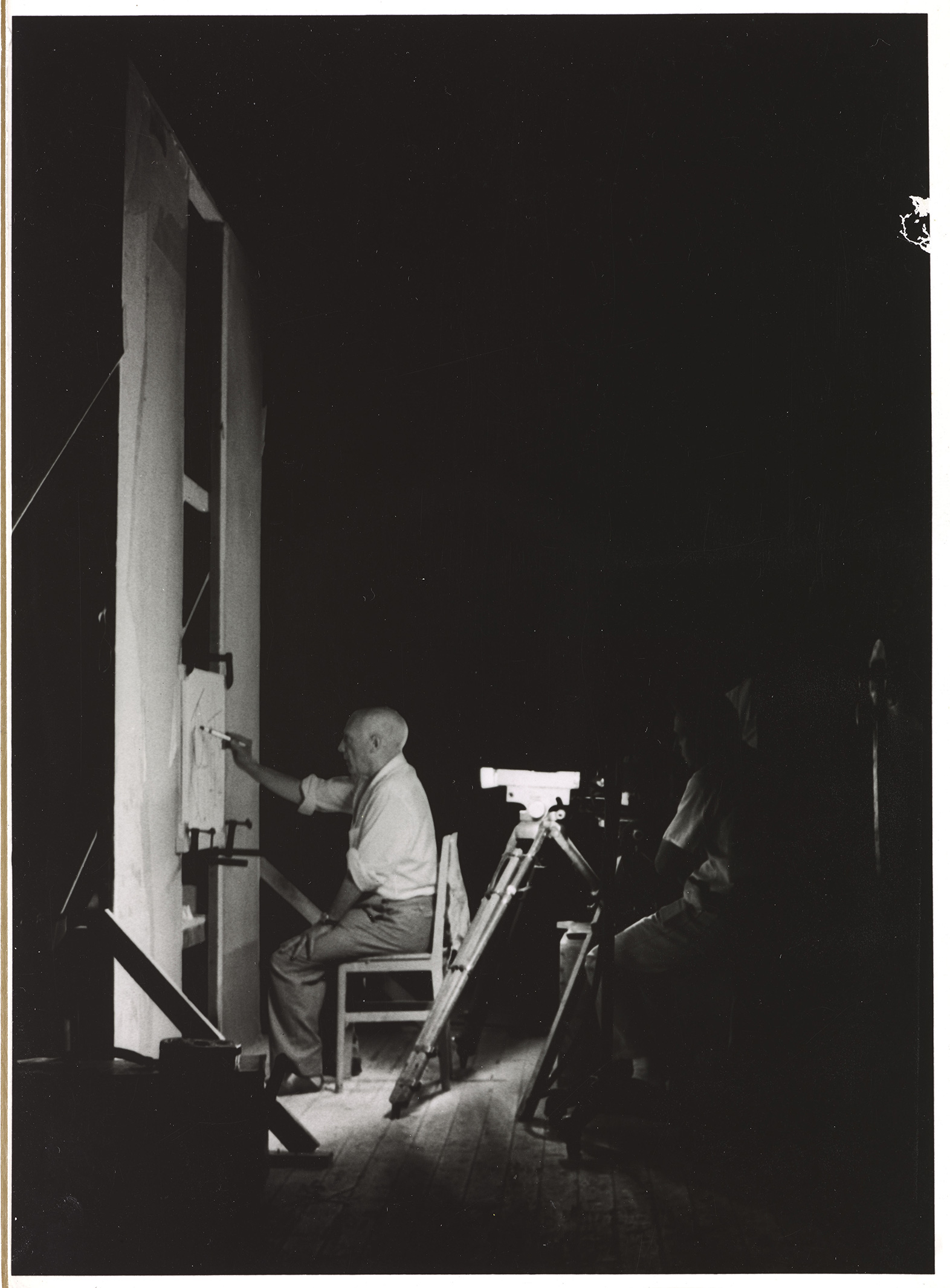
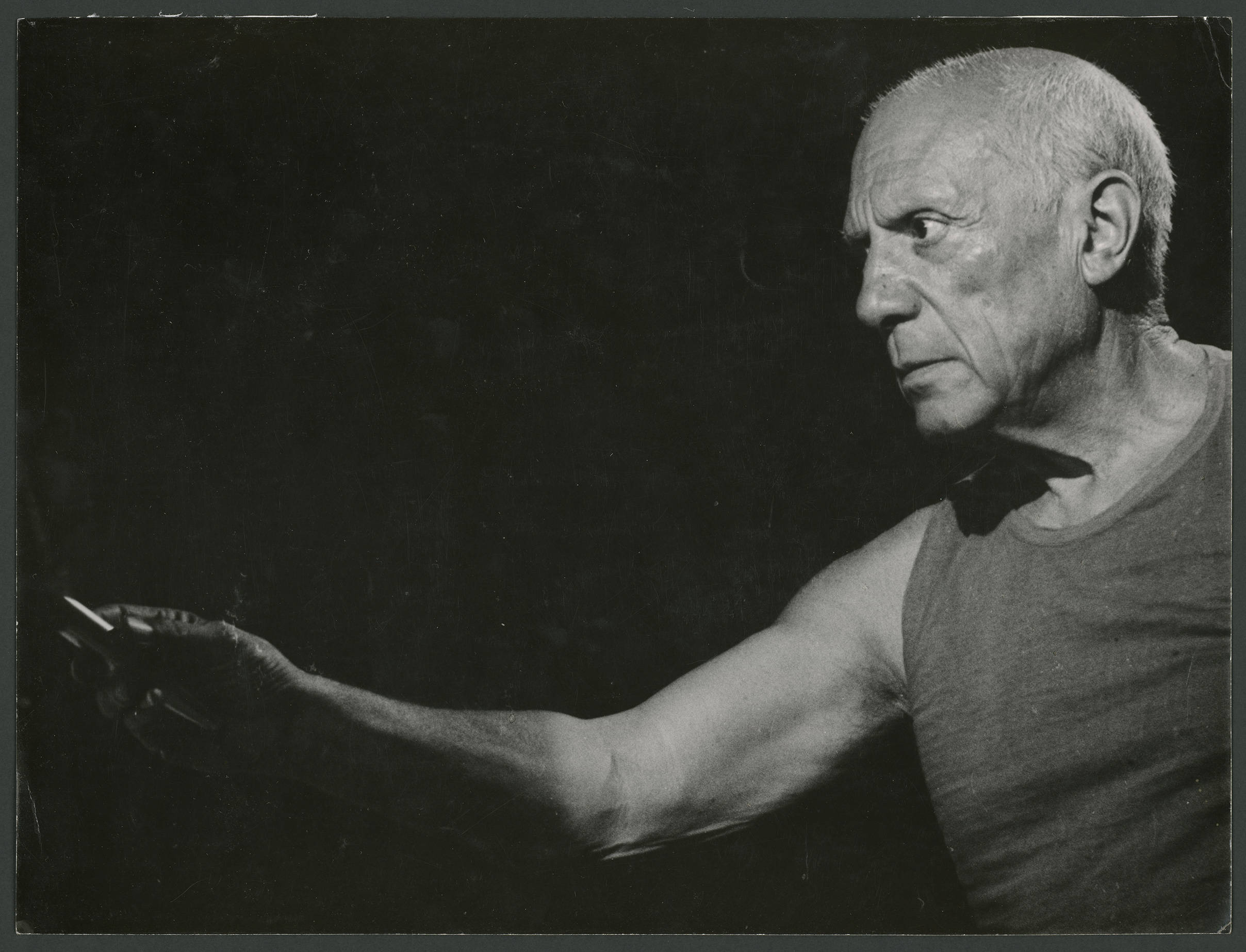
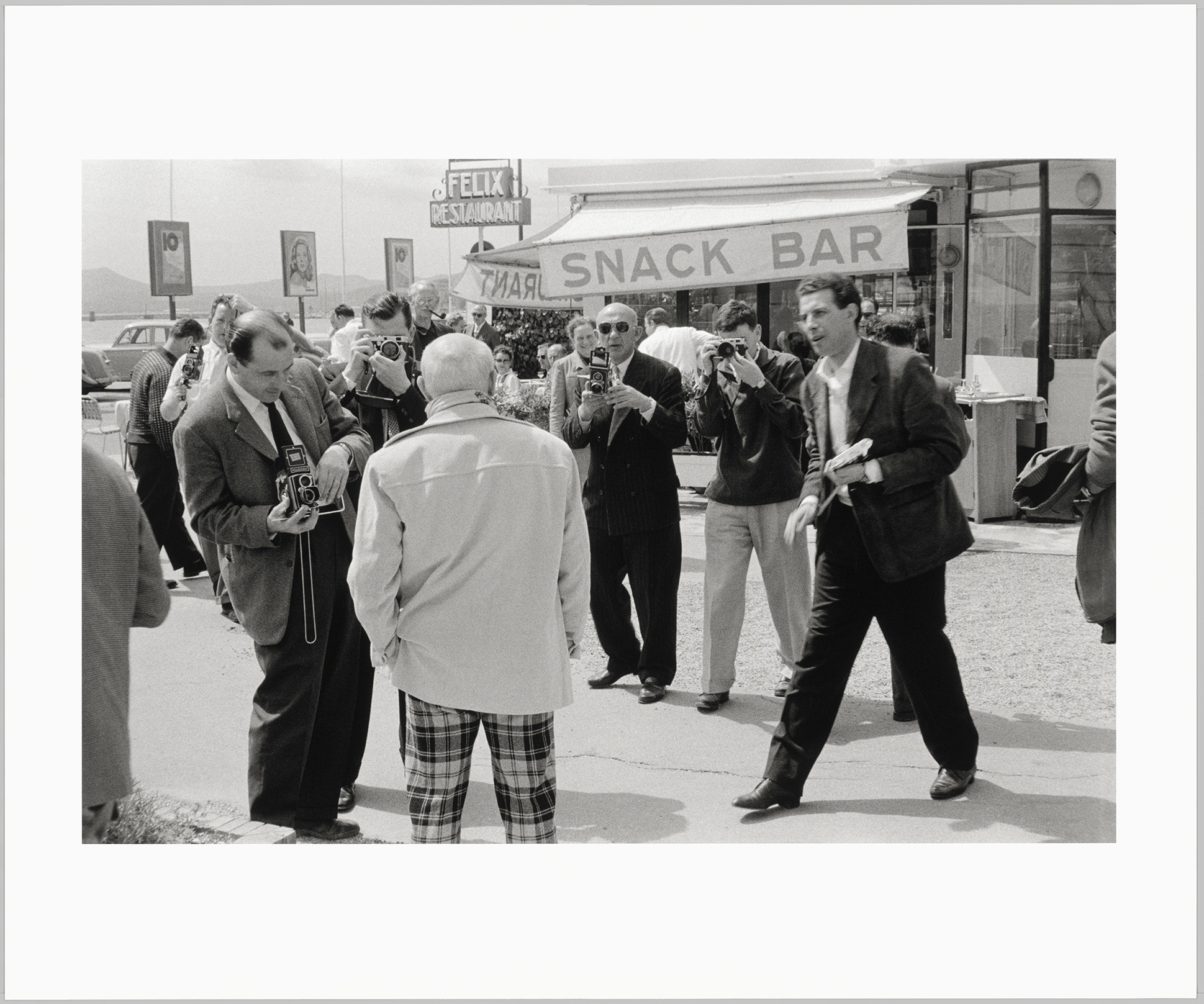
Sculptures en terre chamottée
In 1958, Picasso created two large sculptures made of assembled slabs of chamotte2 rose clay. He also began a series of sculptures made from assemblages of salvaged pieces of wood.
2 Chamotte clay is a smooth clay into which raw fired clay is added, crushed and sifted.
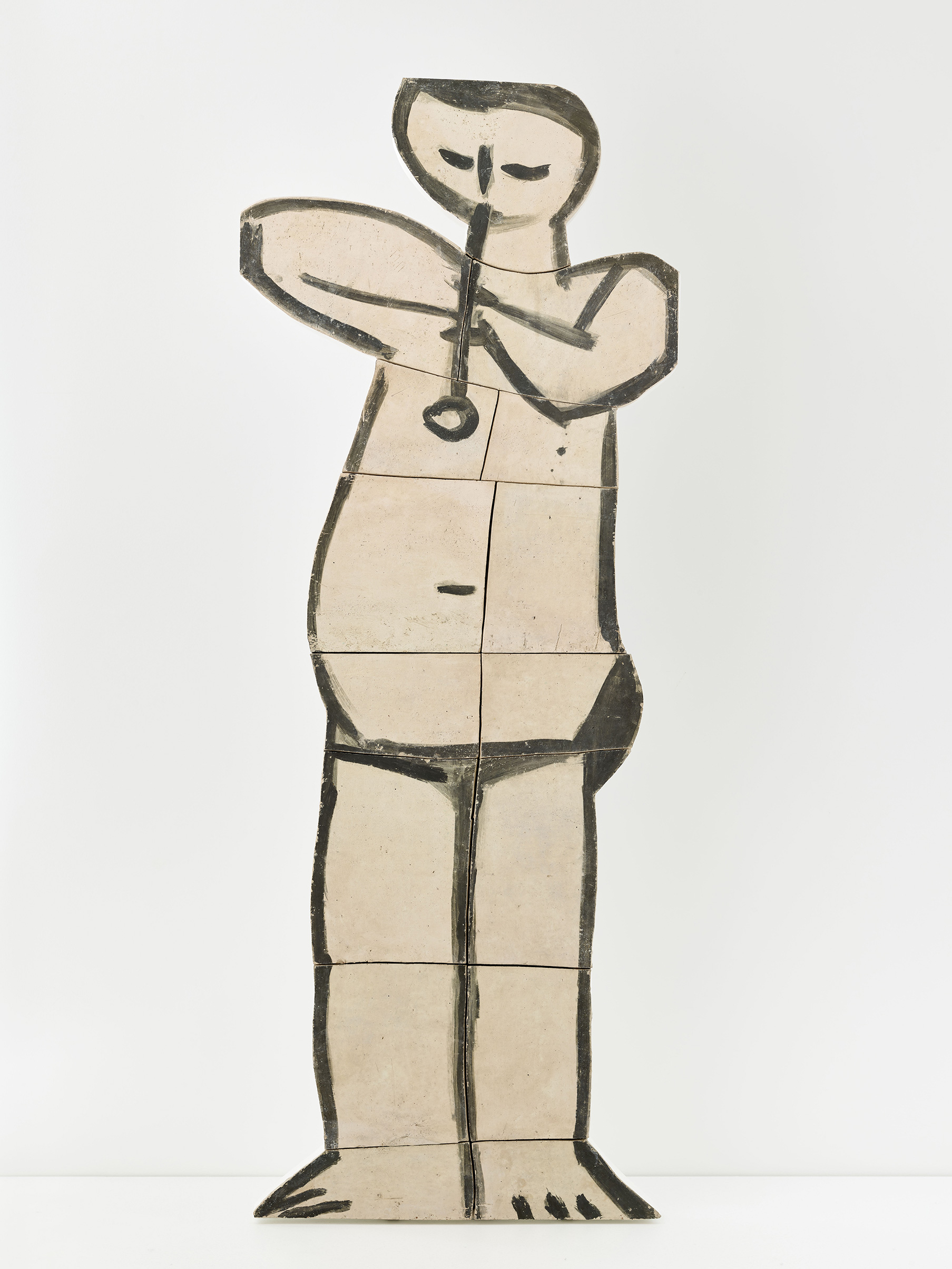
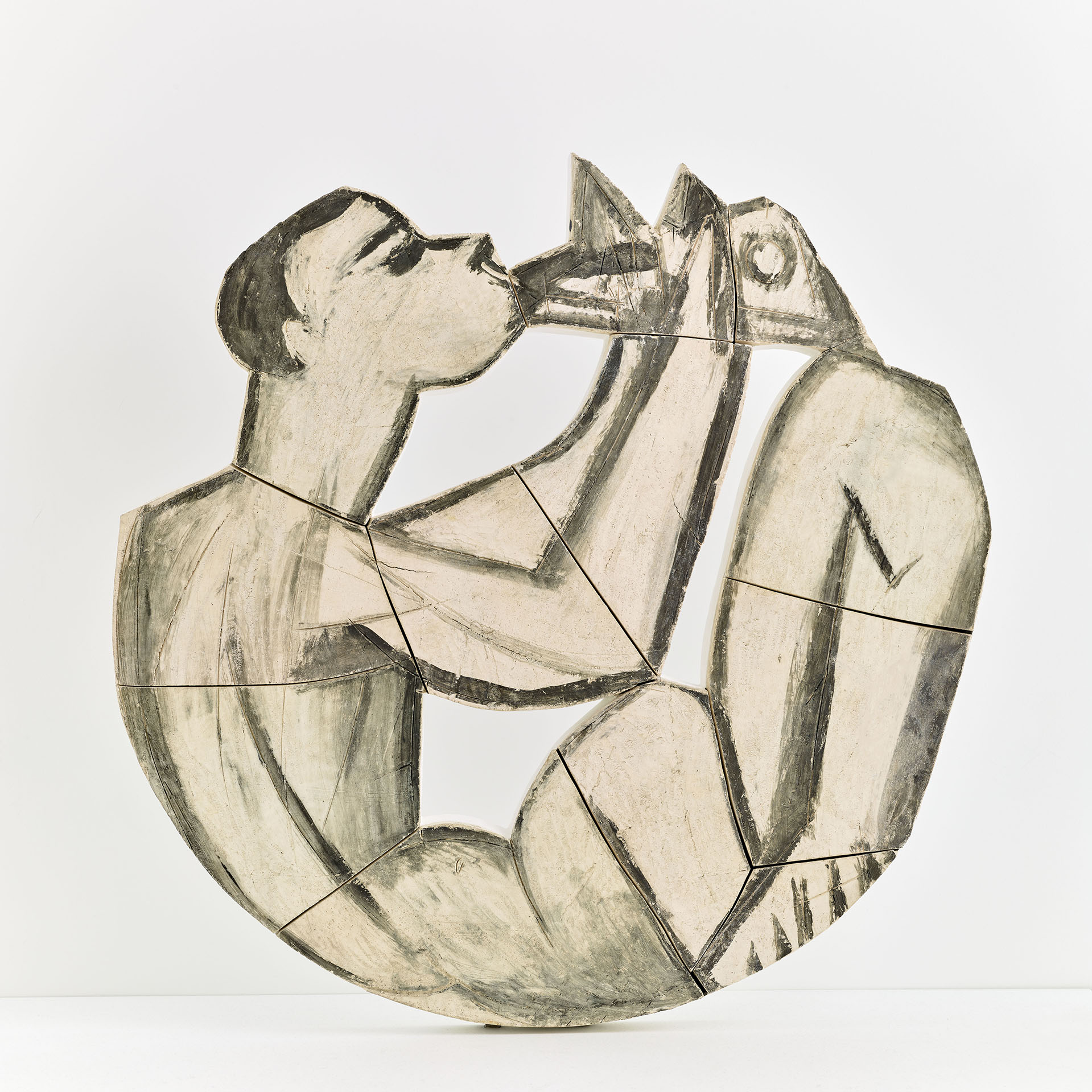
The castle of Vauvenargues
That same year, Picasso bought the Château de Vauvenargues, a fourteenth-century building located near Aix-en-Provence, at the foot of Mount Sainte-Victoire, an emblematic place in the art of Paul Cézanne. He occupied this "château-atelier" at intervals between 1959 and 1962, while keeping La Californie, which he left permanently for another residence in Mougins in 1965.
During the period known as the Vauvenargues period, he began to practice linocuts on Mediterranean themes. He also worked on various materials such as cut and painted metal sheets, creating statues with a light and airy appearance, which were added to the substantial production undertaken during this period, despite his advanced age.
He celebrated his 80th birthday in 1961 in Vallauris. At the same time, David Douglas Duncan published his photographs of Picasso's Picassos, revealing works from the artist's personal collection, which would form one of the bases of the dation to the Musée National Picasso-Paris. The following year, he continued his work on the Têtes en tôle. Jacqueline remained his main model. He declined her portrait, producing no less than seventy works in different techniques: paintings, drawings, ceramic tiles and especially engravings.
The Mediterranean of southern France remains for Picasso a place of life but also a place of incredible artistic production. It was there that he looked at ancestral creative techniques such as ceramics and that he returned to the sources of art history by reinventing certain iconographic myths. The Mediterranean reminds him of his native Spain, between sunbathing and bullfights. Picasso was buried in April 1973 in the park of the Château de Vauvenargues.
